Porsche Carrera GT (2003 – 2007)
Concept car premiere: 2000 September 28 at Paris Louvre Museum / Production car premiere: 2003 March 5 at Geneva motor show
The Carrera GT production car was unveiled in March 2003 at the Geneva motor show in Switzerland. Following great sales success, the target was raised from 1000 to 1500 cars, but finally 1270 Carrera GT supercars were produced. The cars were made between September 2003 and April 2006. In 2 years and 7 months approximately 2 cars were made each day. Carrera GT was one of the very few supercar projects in the world that was economically successful.
More importantly, it has become an icon, probably the best supercar ever made thanks to a purity and performance that is missing in today’s cars. There are sports cars. And there are racing cars. The Porsche Carrera GT, derived from a Le Mans prototype, is a 612 hp racing car with road registration. The last analog hypercar.
First, the Concept Car
The creation of the Porsche 980, the Carrera GT concept car started in 1999 at the same time when the Porsche 9R3 Le Mans prototype project was halted. The 5.5V10 engine and the transmission for the prototype came from the 9R3 as well as the concept of full carbon-fibre construction. For financial reasons, coupé and roadster were not separately planned, but built into one car with removable top. This meant some overweight would be gained due to the safety demands for an open car.
The design was overseen by Harm Lagaay, Head of Design at Porsche AG at that time. Lagaay worked for Porsche from 1971 to 1977 designing the 924 among others and returned to Porsche in 1989 as head of the “Style Porsche” department in Weissach. He oversaw the creation of the 968, 911 993, Boxster 986, 911 996, Cayenne 955 and finally the Carrera GT.
The Carrera GT concept car was unveiled to the press on September 28, 2000, in Paris Louvre Museum. Public saw it two days later at the Paris Motor Show. It was announced that if the car goes into production, at least 500 will be built. The specs were: 5.5-litre V10, 8200 rpm max engine speed, 410 kW, 600 Nm (444 lb-ft), 90-litre tank, 1250 kg / 2756 lb, under 4 seconds to 100 km/h, under 10 seconds to 200 km/h and top speed at least 330 km/h (205 mph).
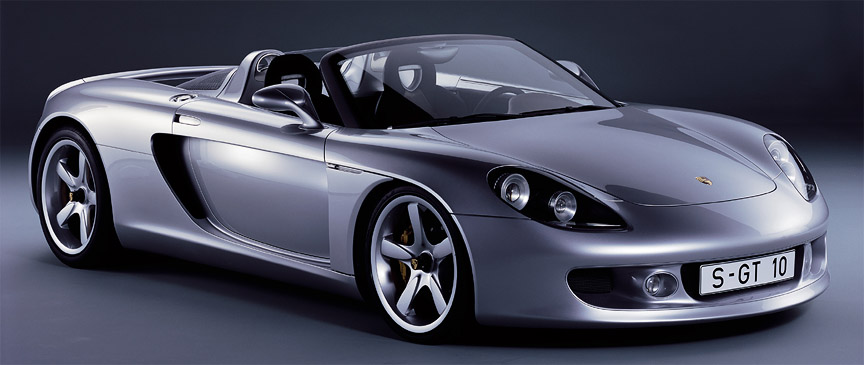
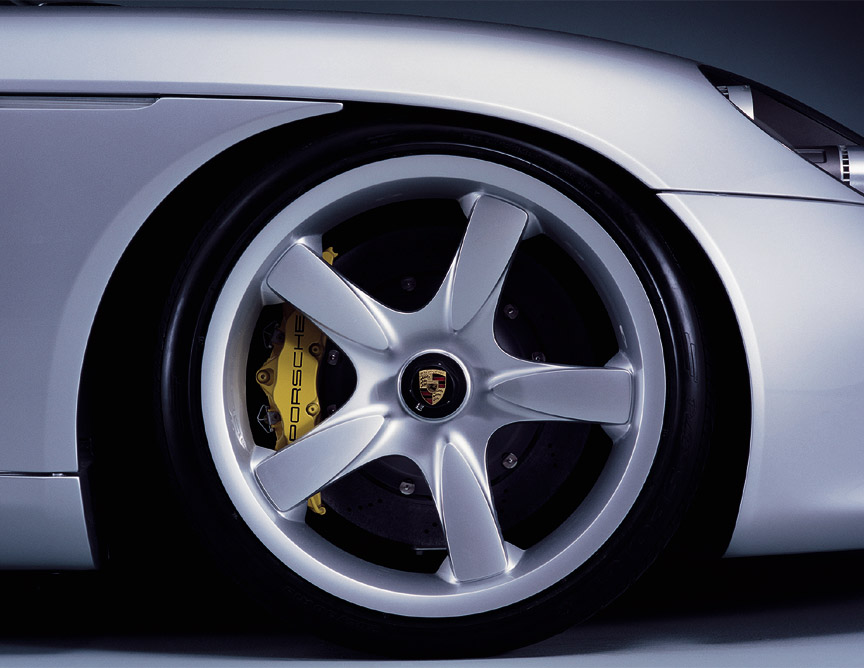
Production Car Development
On January 8, 2002, at the Detroit Motor Show press conference, Porsche confirmed that the Carrera GT series production car will be made. When the production was confirmed, the initial production plan was raised from 500 to 1000 supercars.

The Monocoque and the Rolling Chassis
The Carrera GT was the first car in the world, whether on the road or in racing, to apply a brand-new design and construction concept – both the monocoque and the entire frame carrying all the car’s modules and components were made of carbon-fibre reinforced plastic (CFRP).
Carrera GT’s rolling chassis consists of structural elements (chassis and engine frame), mechanical units (powertrain, suspension, cooling system) and electrical components. In its torsional stiffness, the Carrera GT sets a new record for open cars. The car is operative even without the body panels which have merely aerodynamic and esthetic functions and are without importance for the structural integrity of the rolling chassis.
With the exception of PUR front and rear bumpers, all the other body panels were made of carbon-fibre composite material with wall thickness of approximately 1.2 mm.
The initially set 1250 kg / 2756 lb weight goal couldn’t be reached with safe open top car even though carbon-fibre was extensively used. Other frequently used materials were aluminium, magnesium, H400 high-grade steel and titanium. The car came out 10% heavier than initially planned.
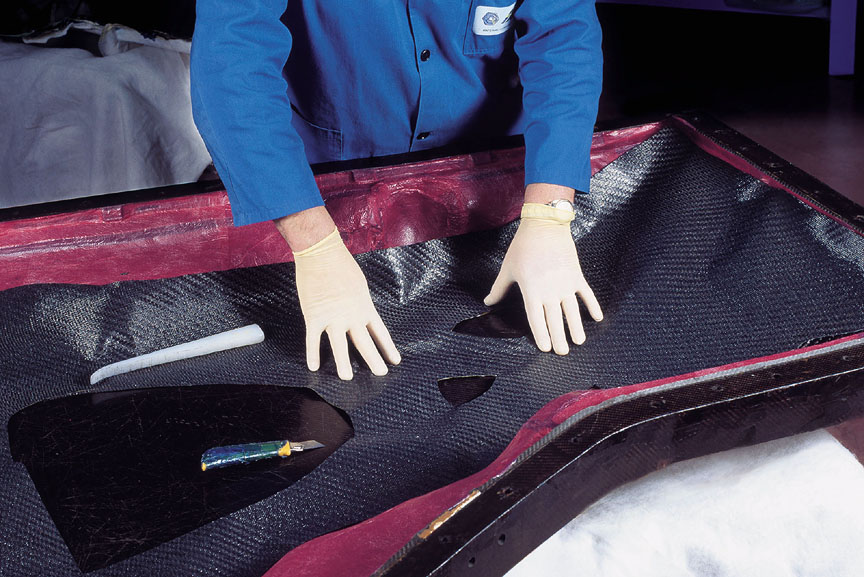
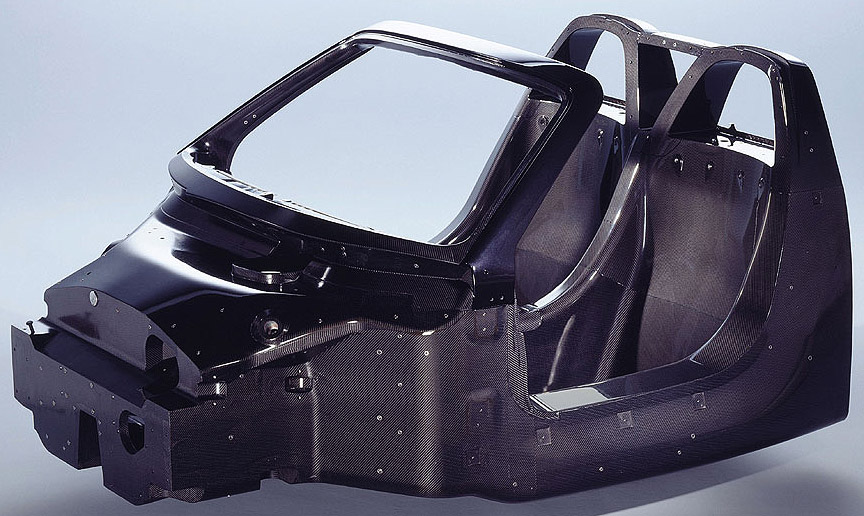
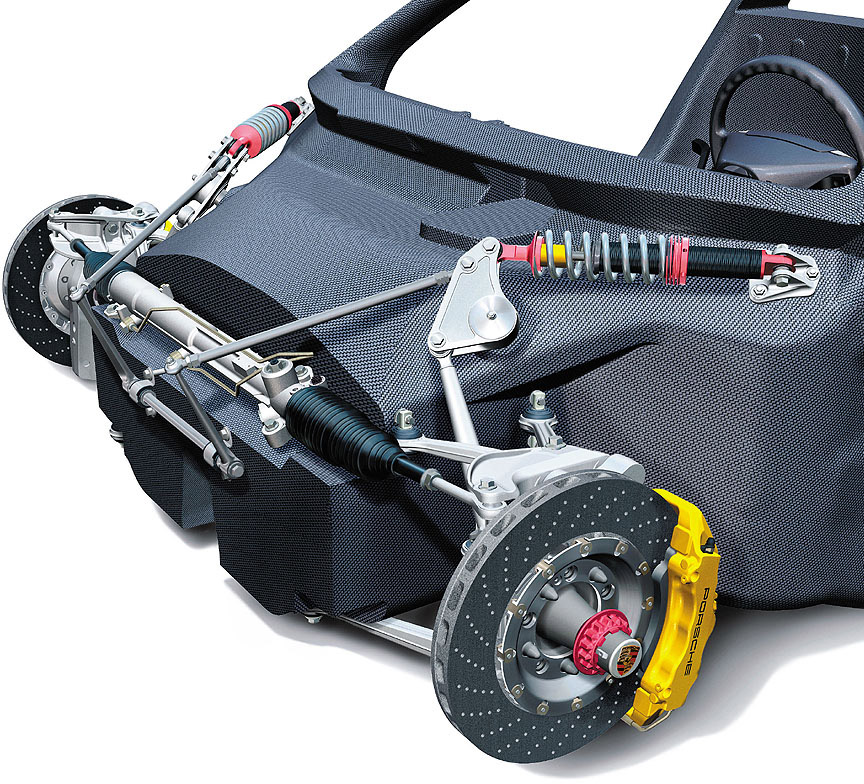
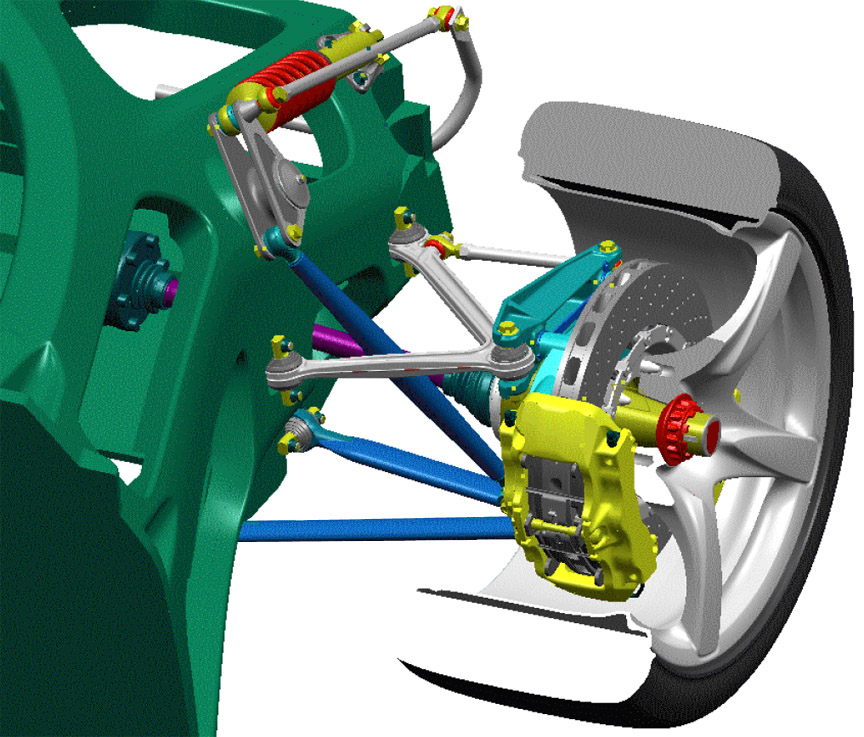
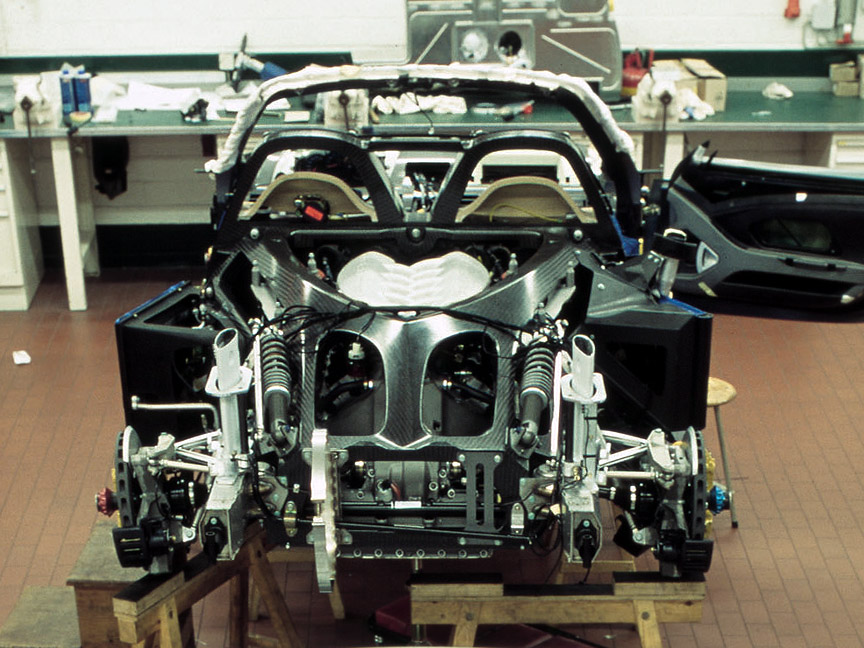
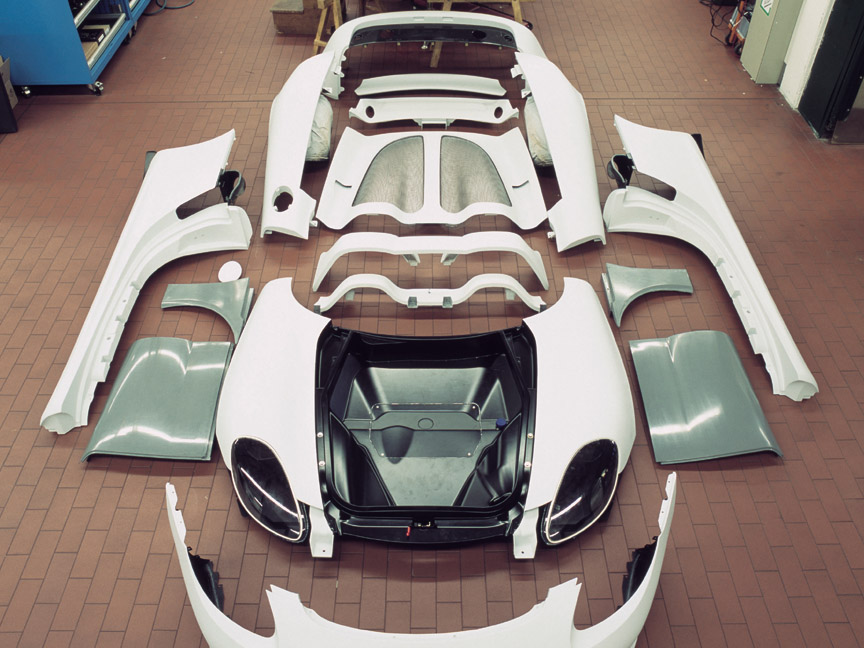
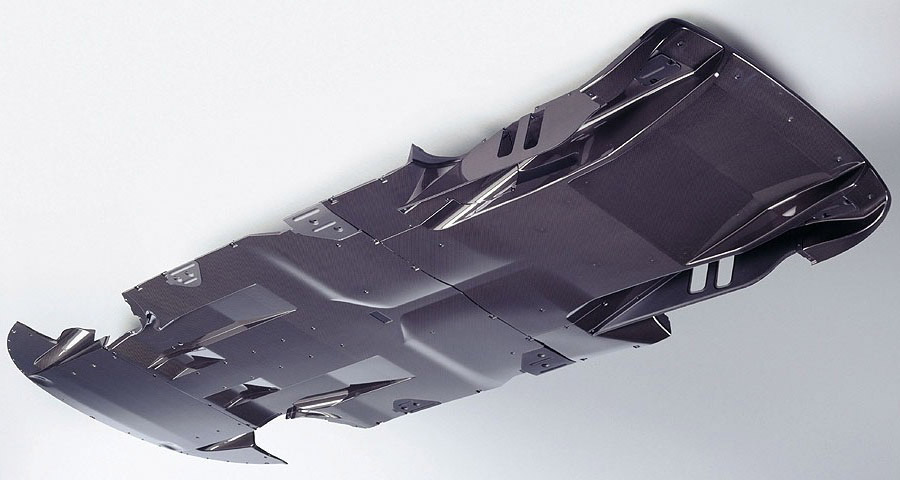
The Engine
The 5.7V10 engine of the Carrera GT production car was the descendant of the 5.5V10 racing engine developed for the Porsche 9R3 prototype endurance racer and used in the Carrera GT concept car. As the production Carrera GT came out 10% heavier than the concept car, 10% more power was needed in order to keep the initial power-to-weight ratio. The bore diameter was increased by 2 mm to 98 mm to obtain a displacement of 5,733 cm³ and the engine block was increased by 7 mm in order to provide space for the installation of an additional piston ring. The engine features a sophisticated crankcase-integrated lubrication system fitted with 10 oil pumps, i.e. 1 pressure pump and 9 evacuation pumps to allow oil evacuation of the individual crank chambers as well as the cylinder heads and the timing chain case. The lubricating system has been laid out for lateral accelerations of up to 2.5 g to ensure safe engine operation also under motorsport conditions.

 Ceramic clutch
Ceramic clutch
The Carrera GT was the first car in the world equipped with a ceramic clutch. It is called PCCC or Porsche Ceramic Composite Clutch. The diameter of the two-plate clutch is only 6.65″/169 mm, but it can stand 1000 Nm (735 lb-ft) of torque. The clutch weighs just 3.5 kg/7.7 lb which is 1/3 of the mass of the 996 Turbo clutch, for example.
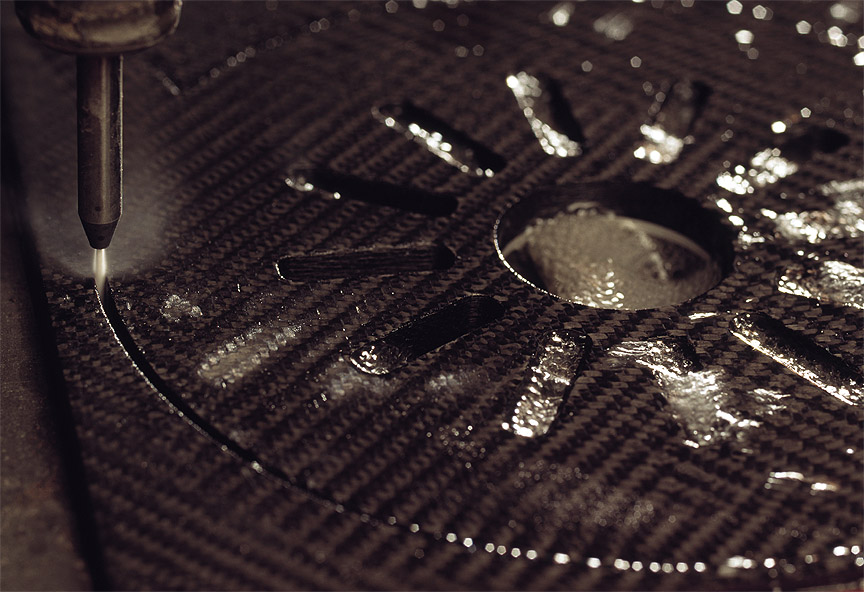
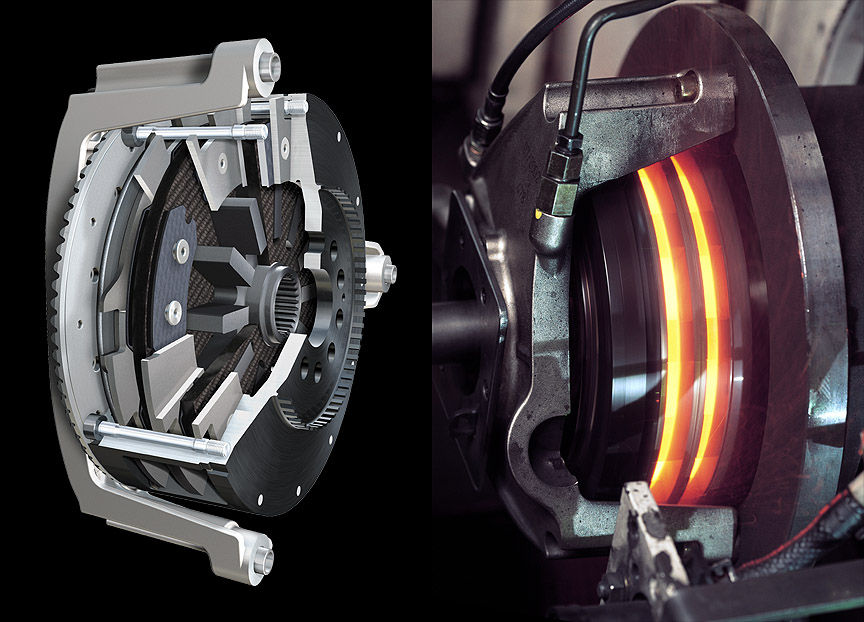
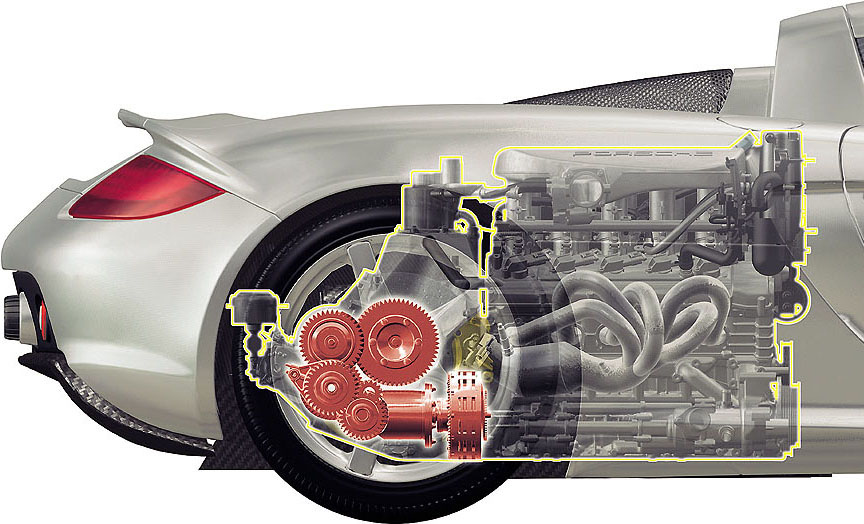
Transmission
The extremely severe requirements with regard to the overall concept of the car excluded the installation of a standard transmission. In order to cope with the specific boundary conditions in terms of input torque, wheelbase, aerodynamics and center-of-gravity level, a completely new transmission was developed for the Carrera GT. It was decided to use a transverse transmission with integrated engine oil tank and cyclone separator for oil foam suppression. With this concept, the masses are concentrated at the center of gravity while providing space enough for the installation of a aerodynamic diffusor across the entire width of the car. Due to the need to use a clutch as compact as possible, the Carrera GT does not come with a two-mass flywheel – but the function of such a flywheel is provided nevertheless by the special design of the input shafts: the first main shaft is hollow, with a long and thin full shaft running inside as a spring rod. Together with the mass weight of the angle drive the two shafts acting as a torsion spring serve to absorb possible jolts coming from the engine, reducing transmission noise in the process.
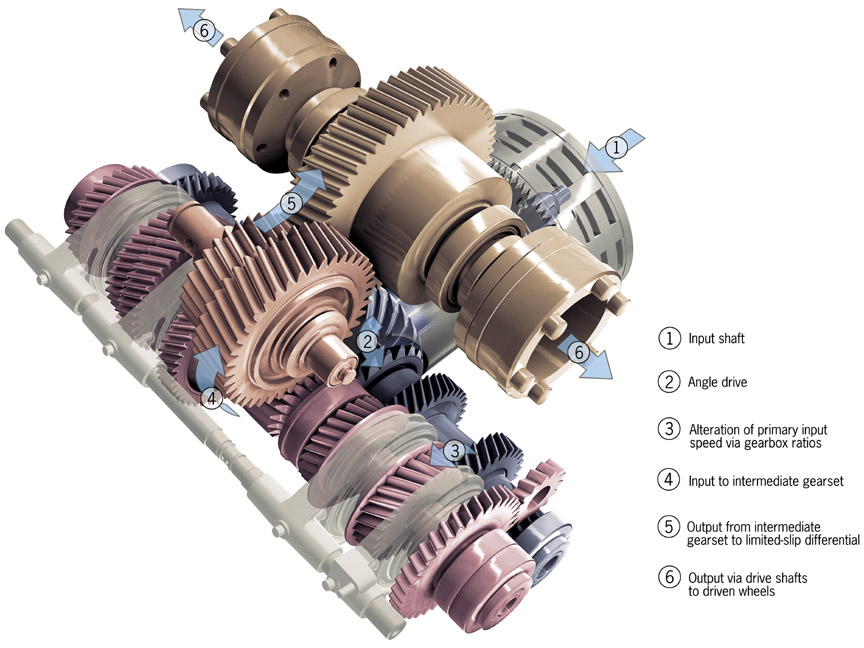
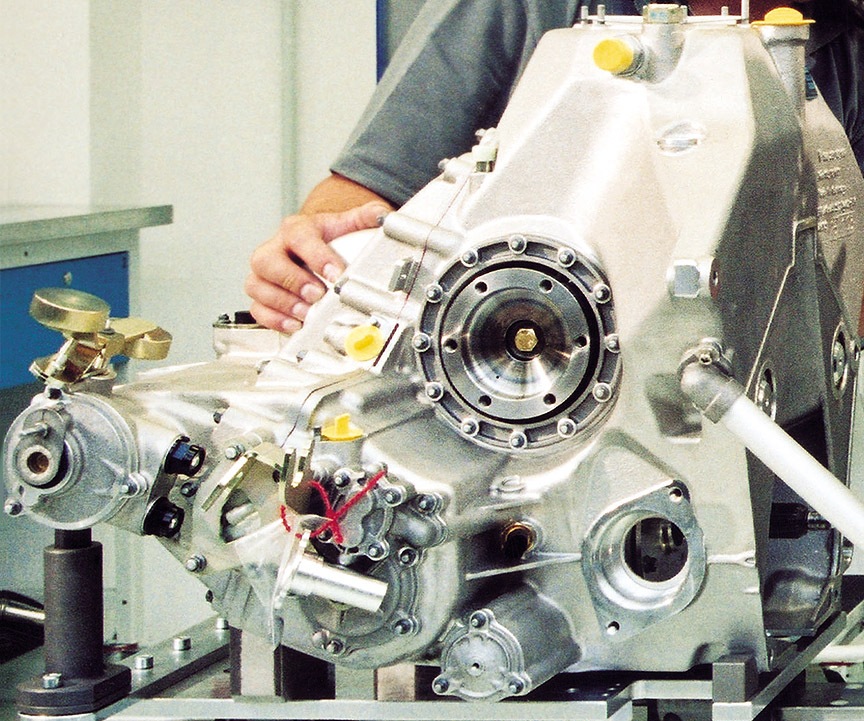
Mechanical Drawings
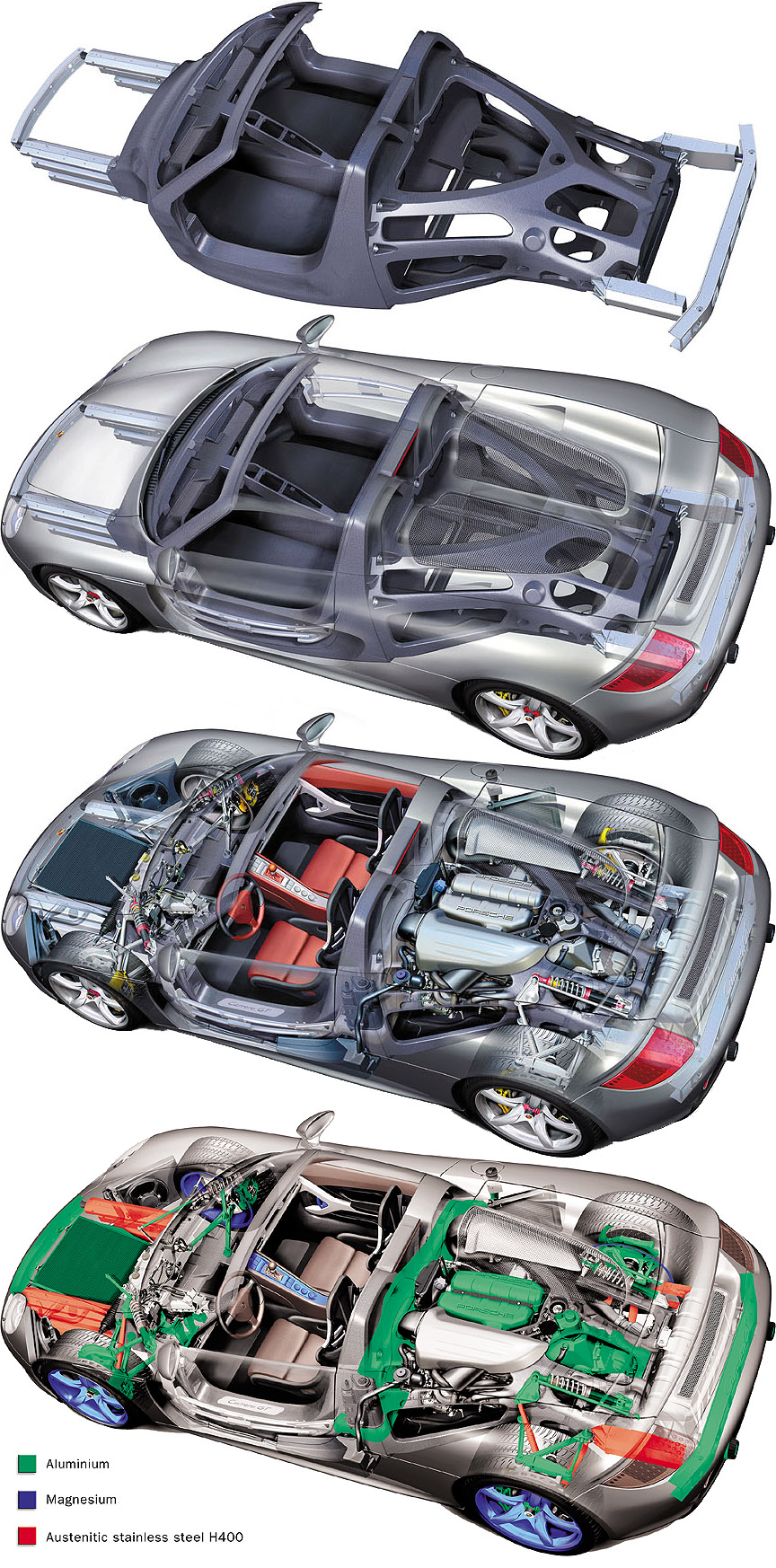
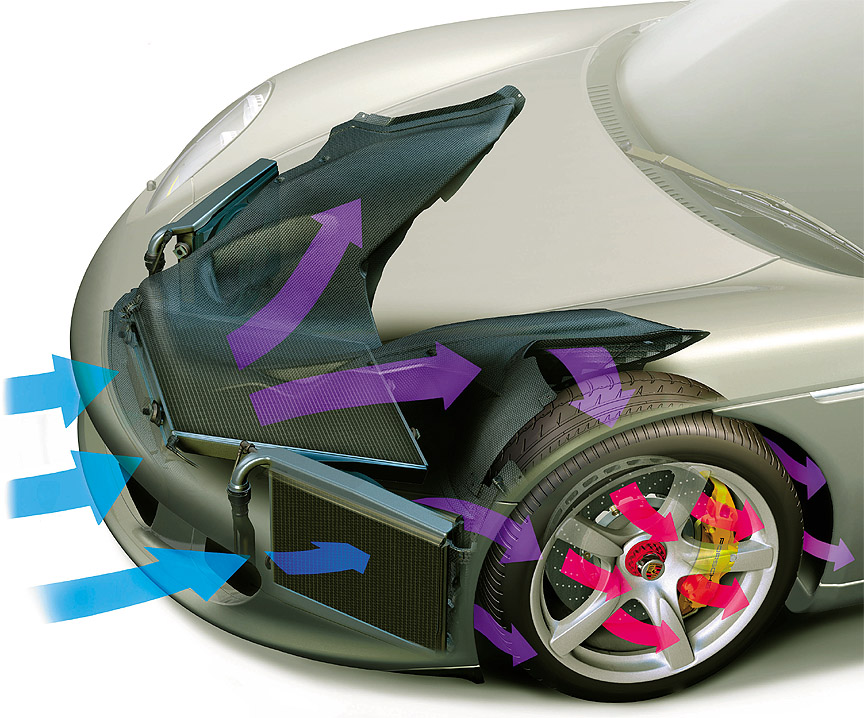
Engine production in Stuttgart
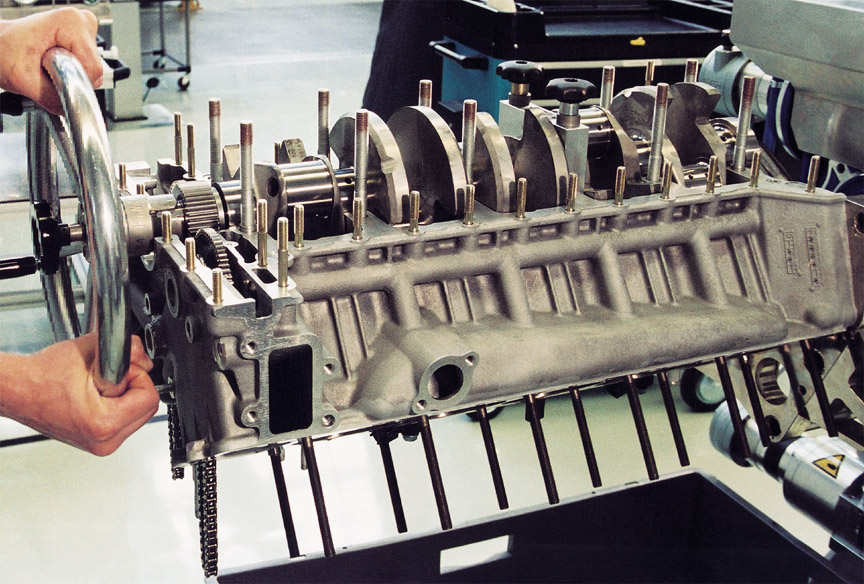
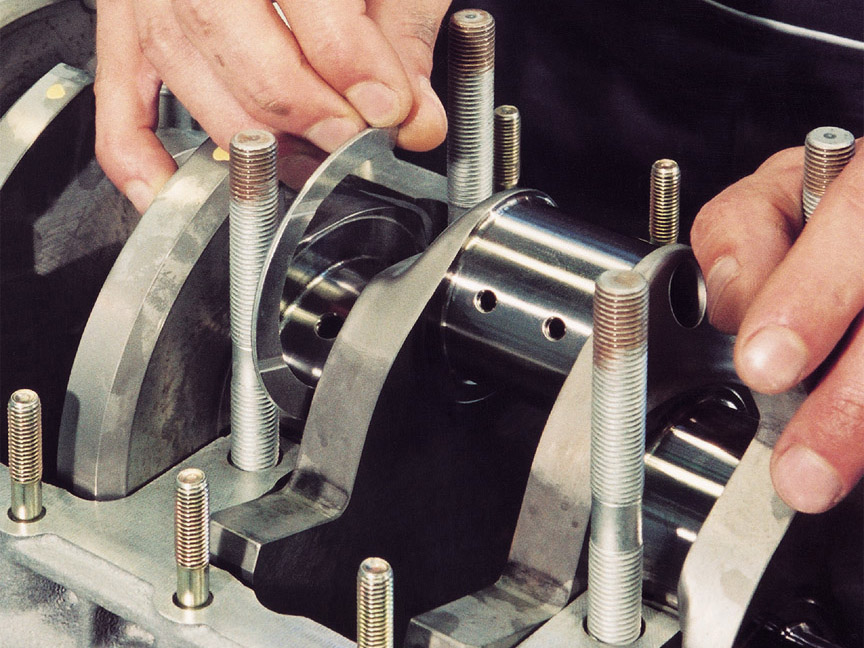
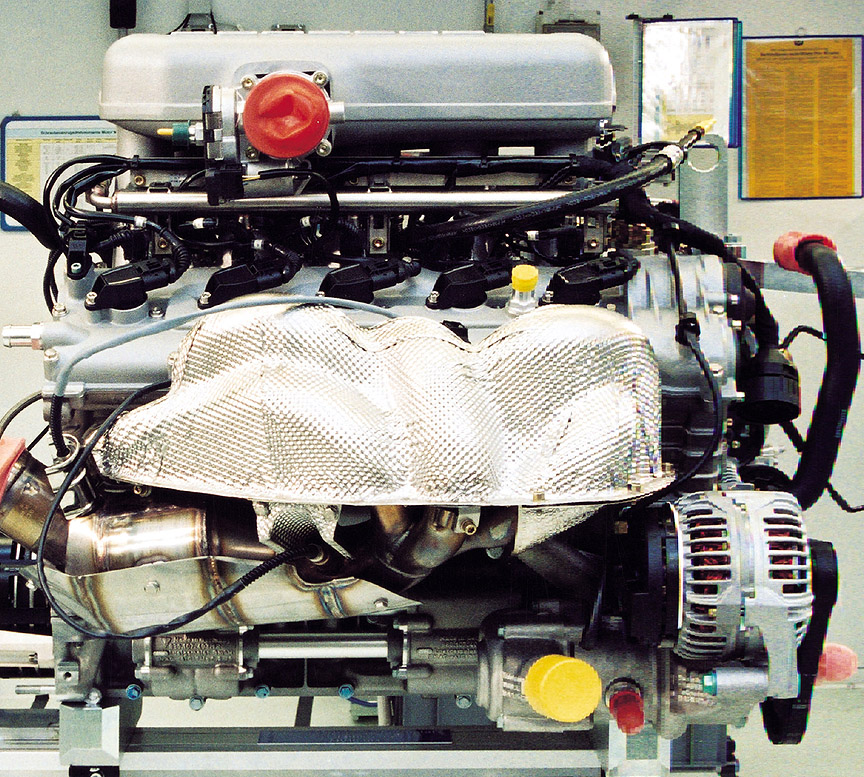
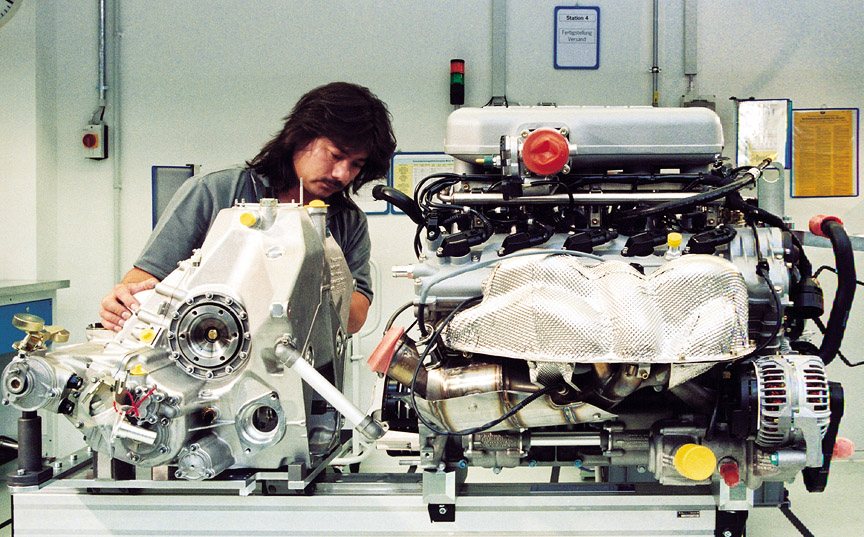
Car Assembly in Leipzig
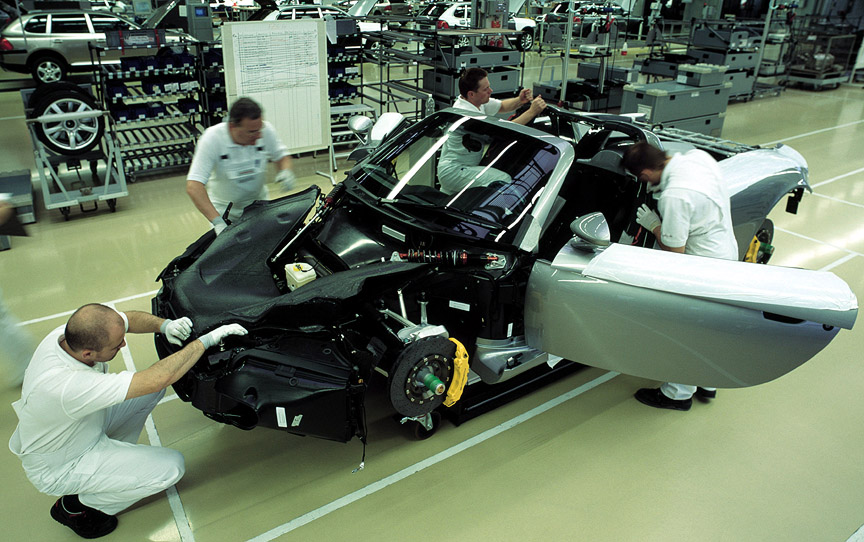
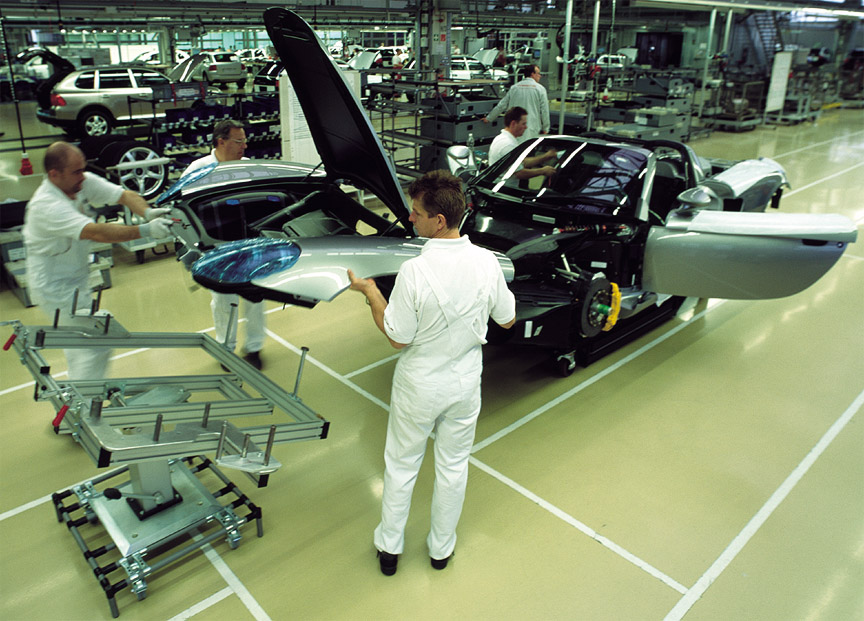
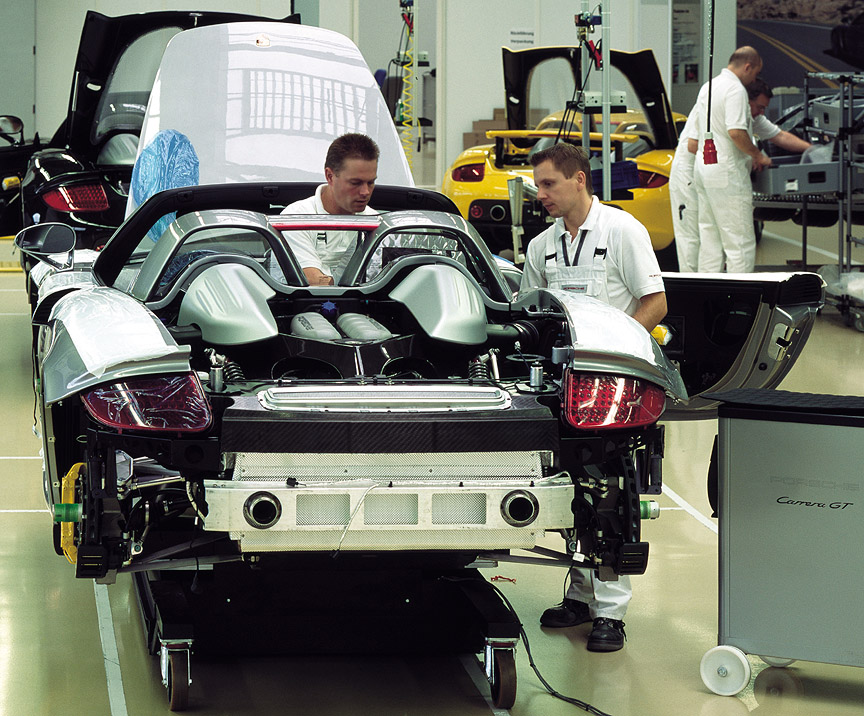
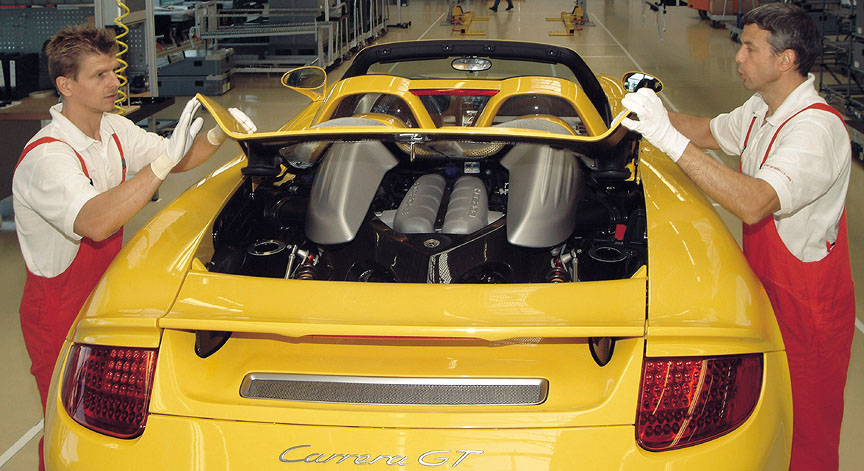
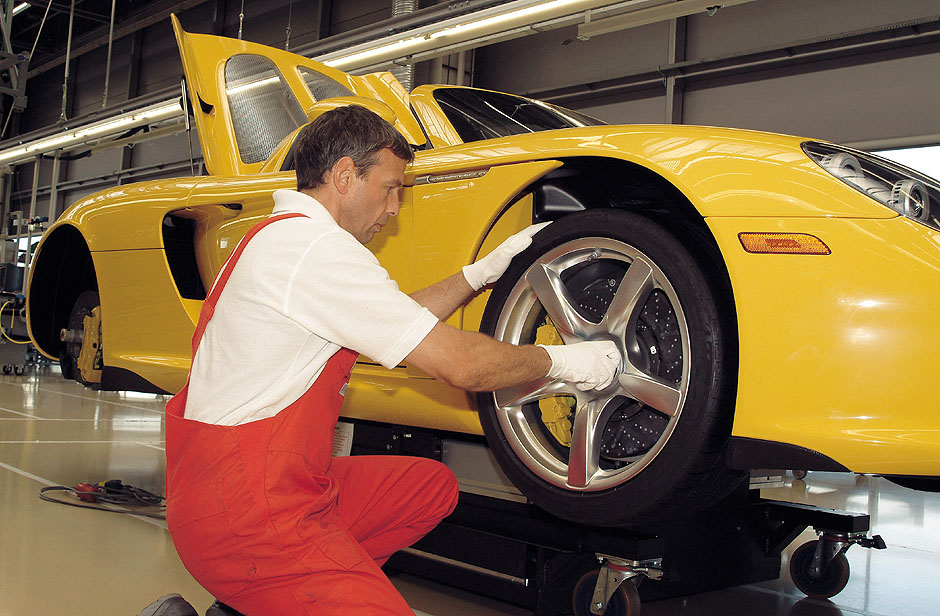
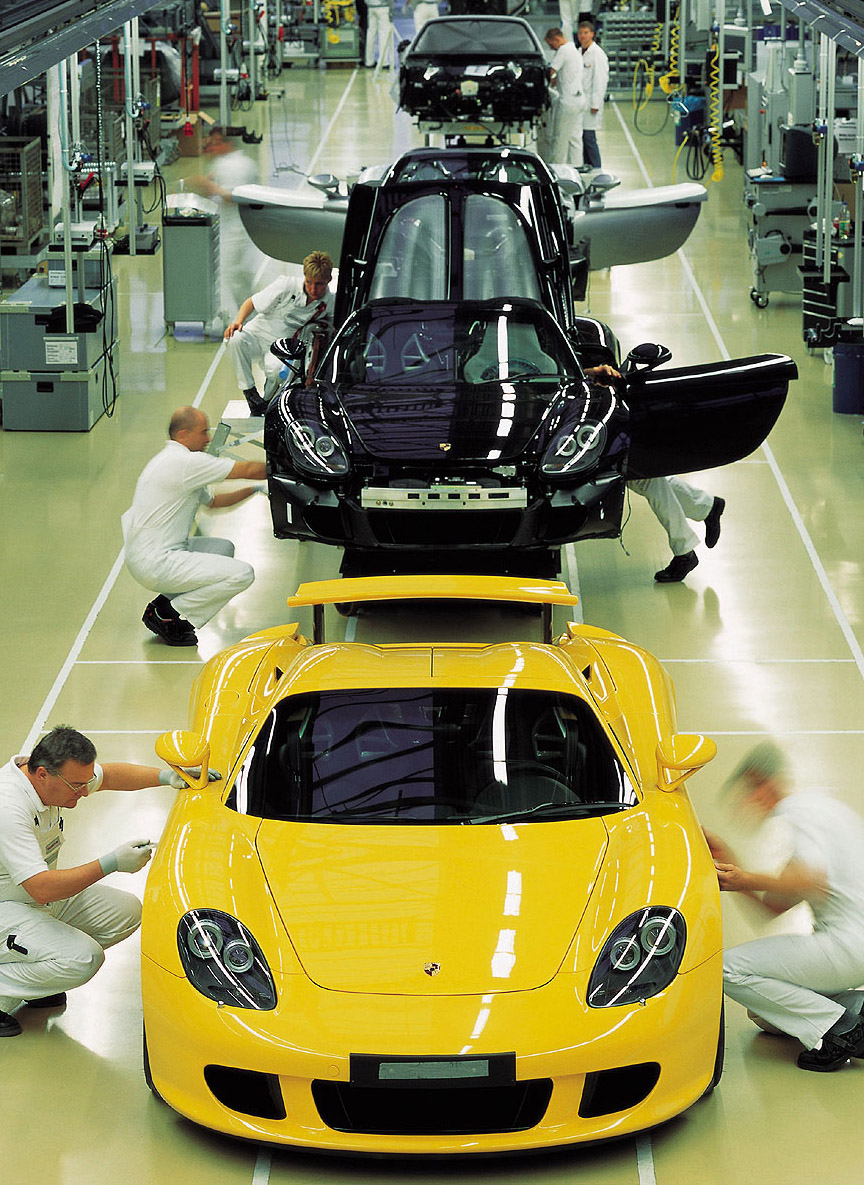
The Little Details
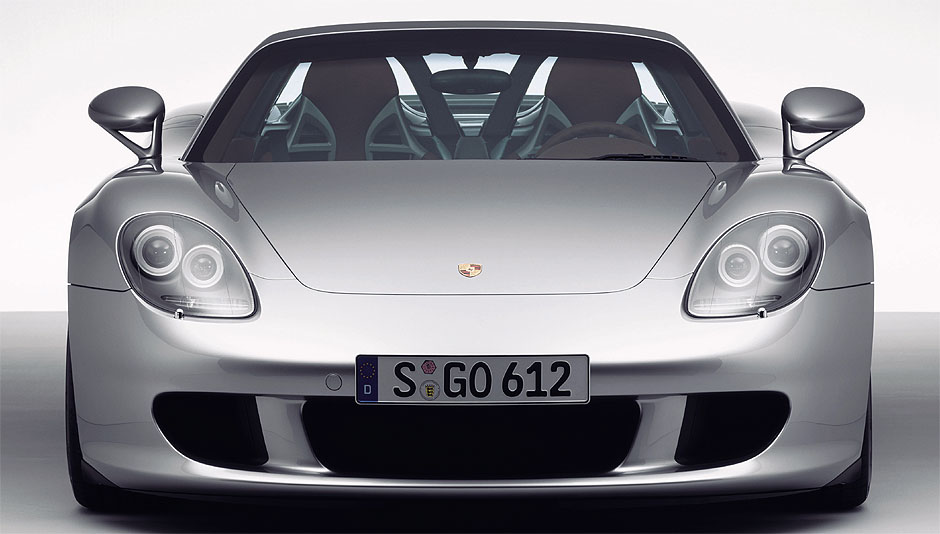
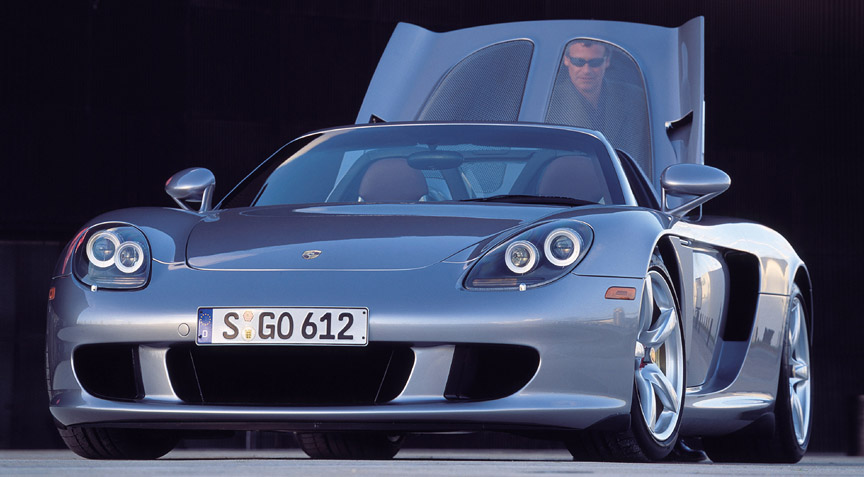
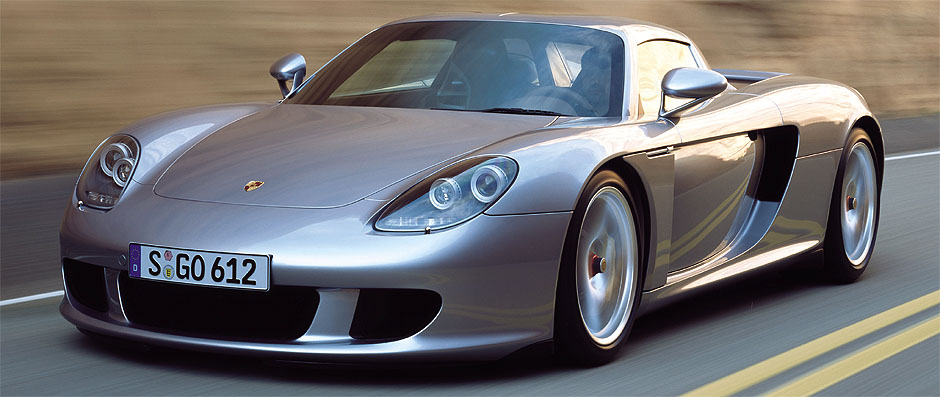
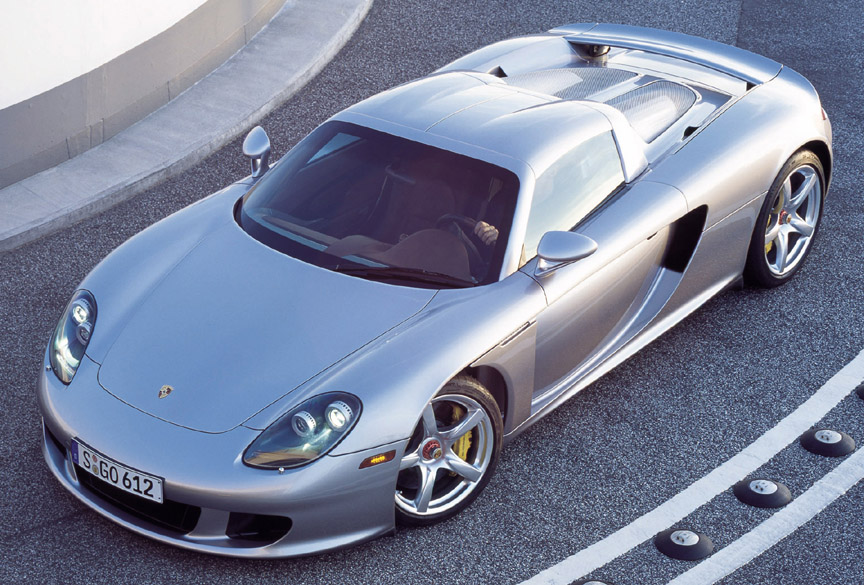
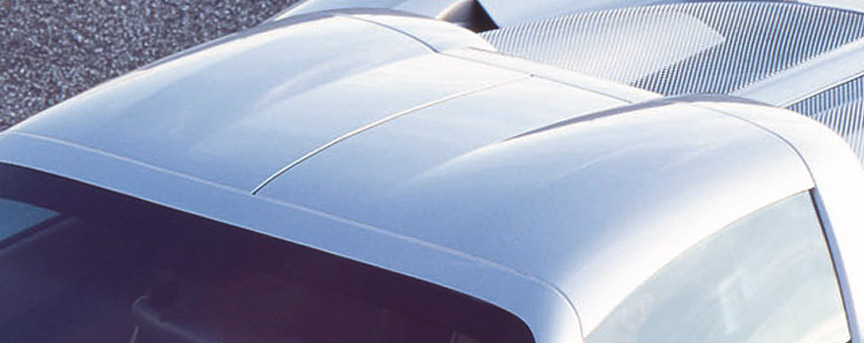
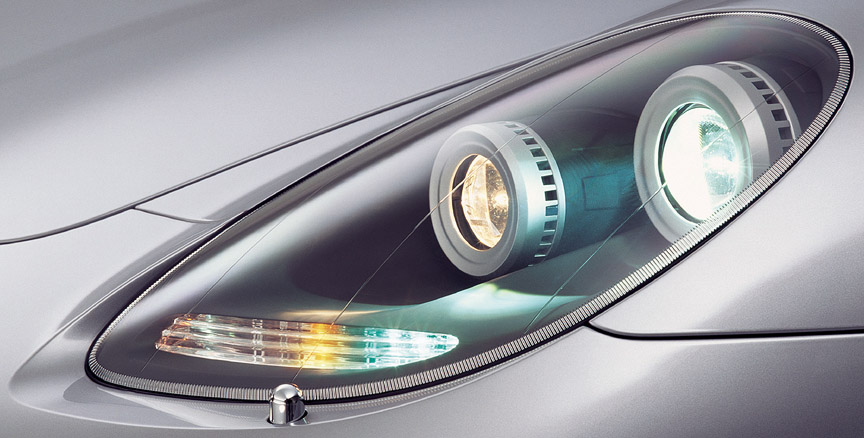
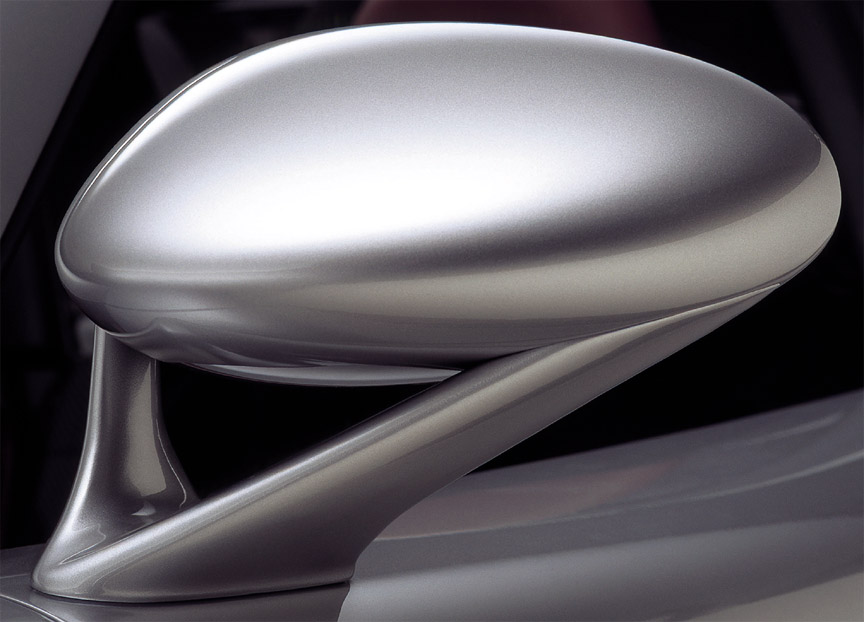
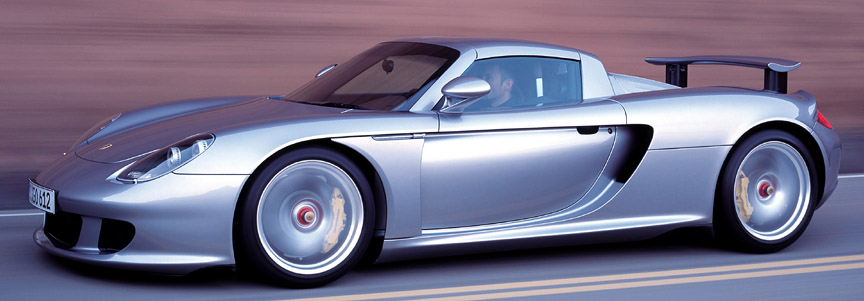
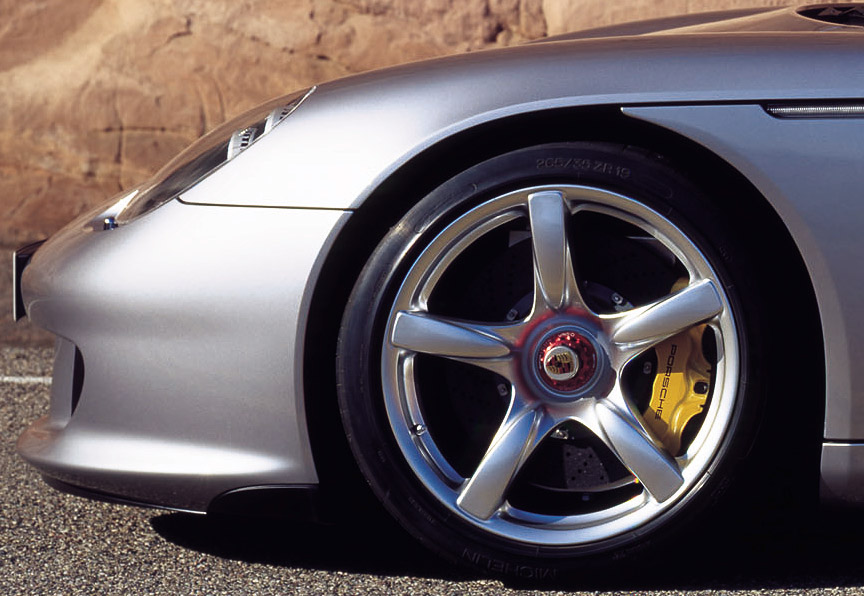
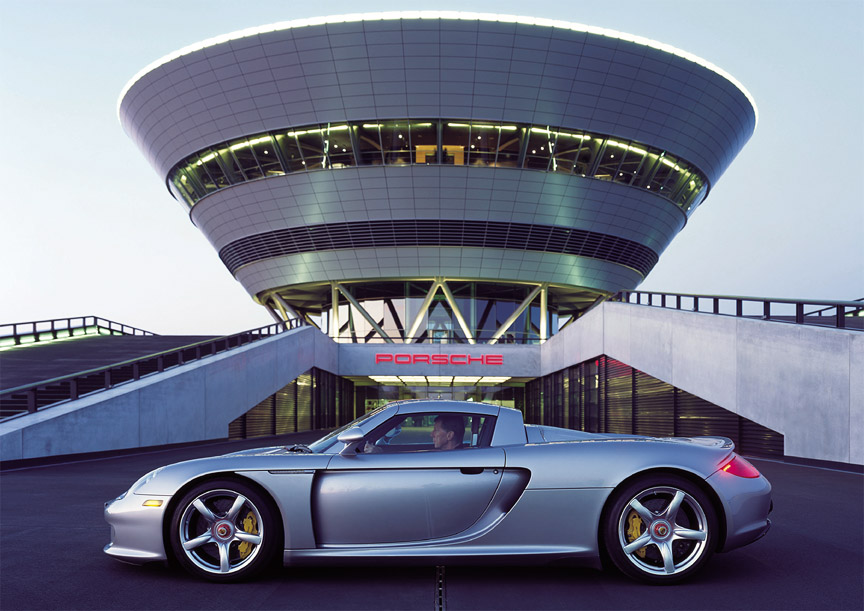
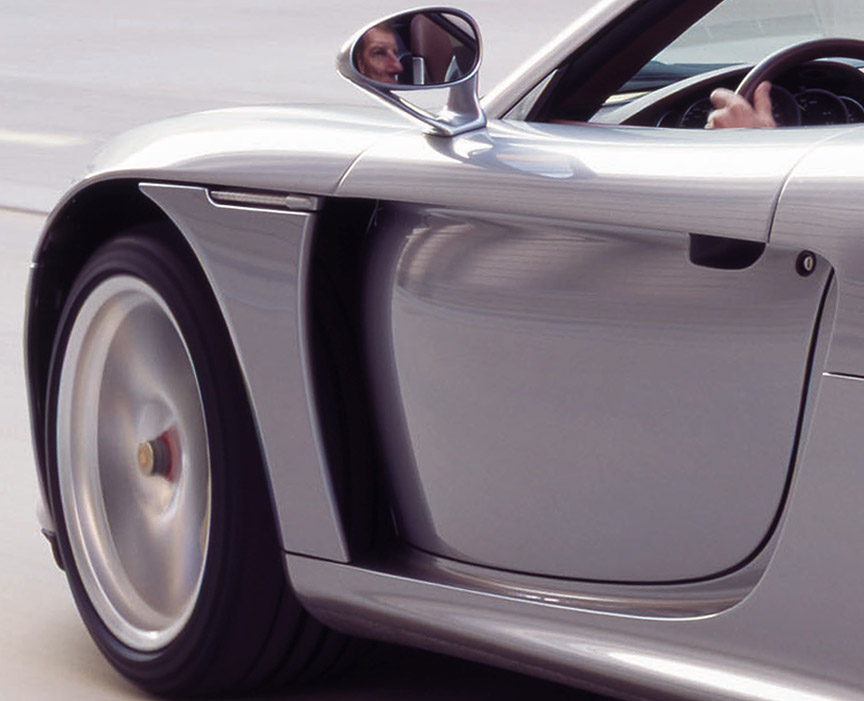
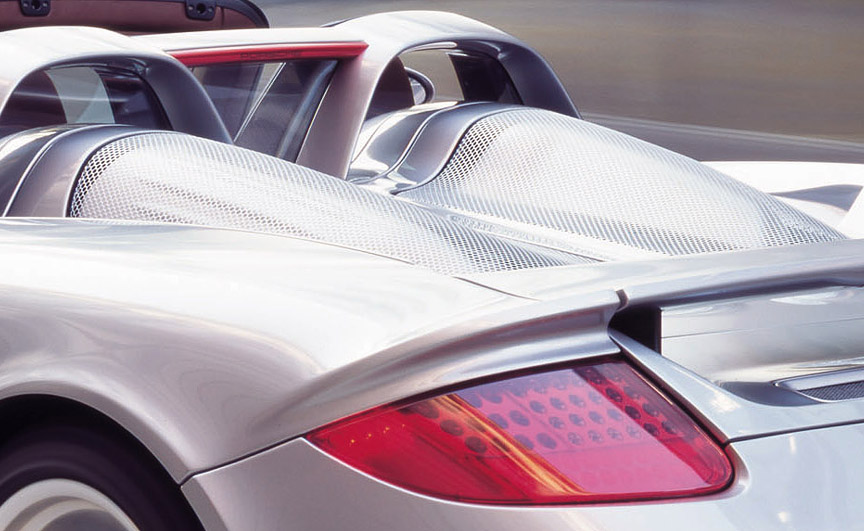
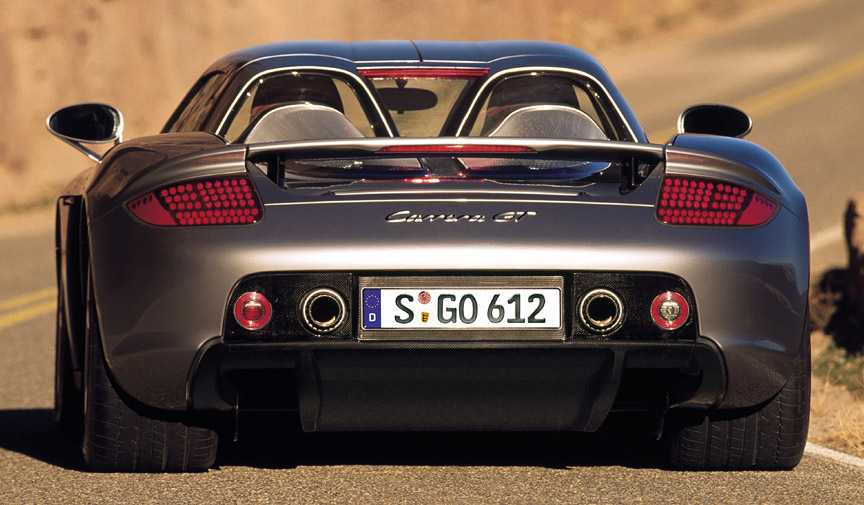
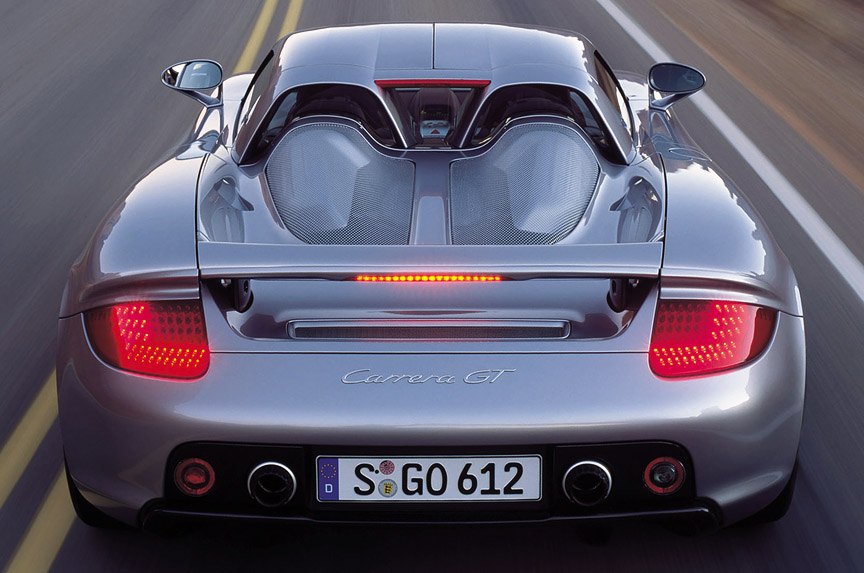
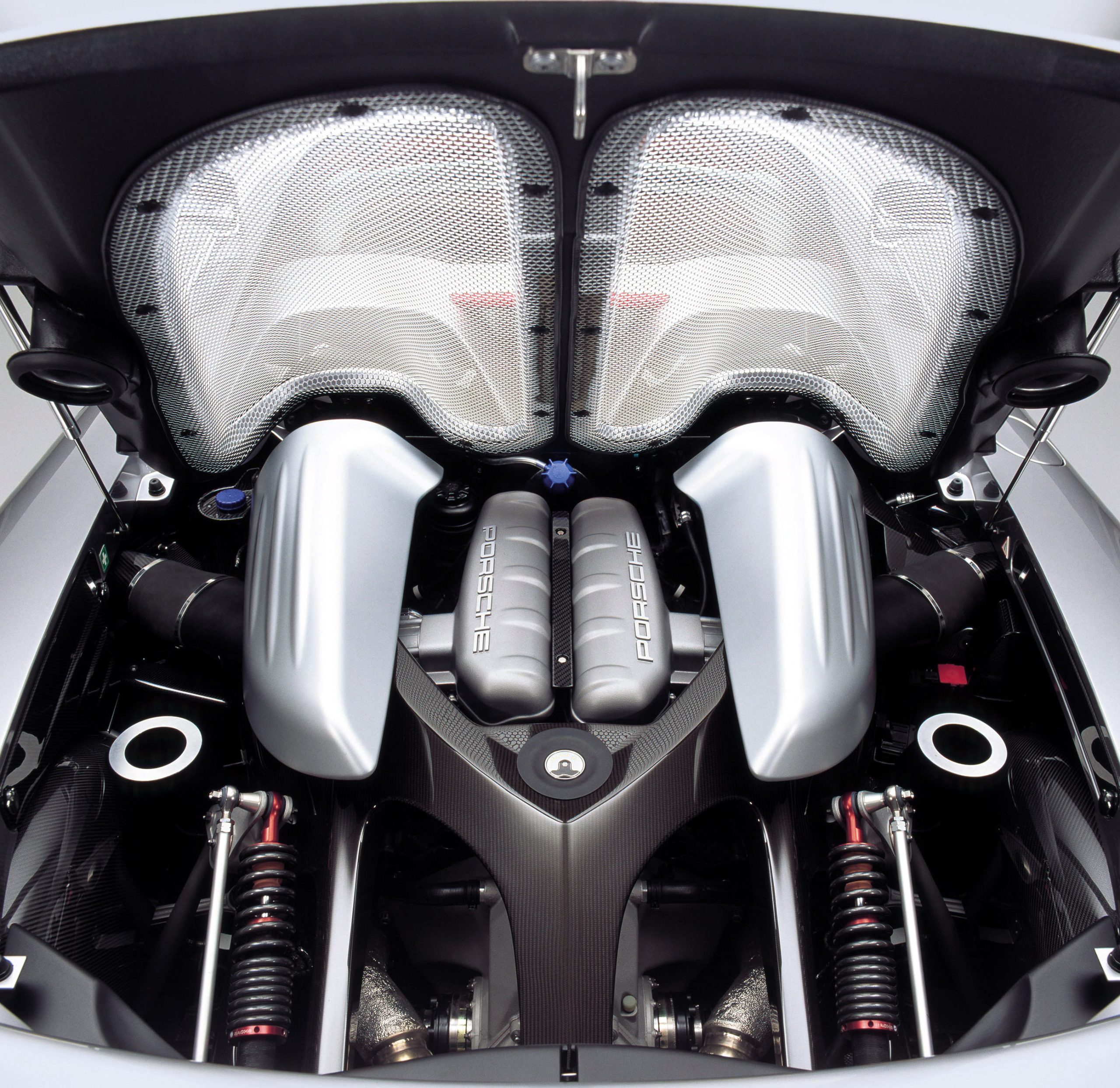
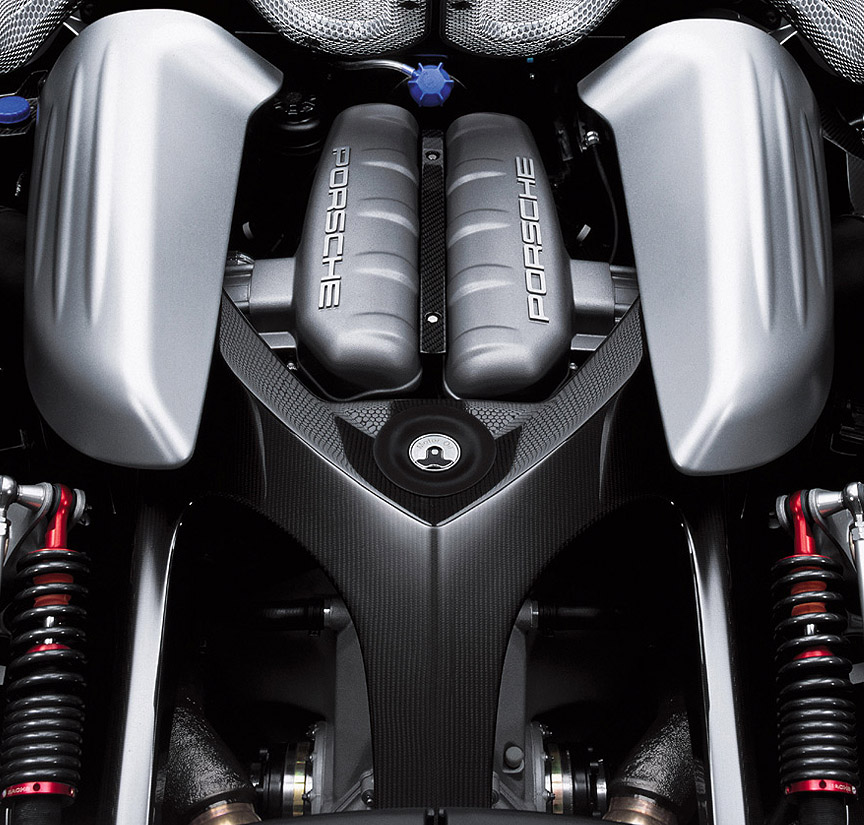
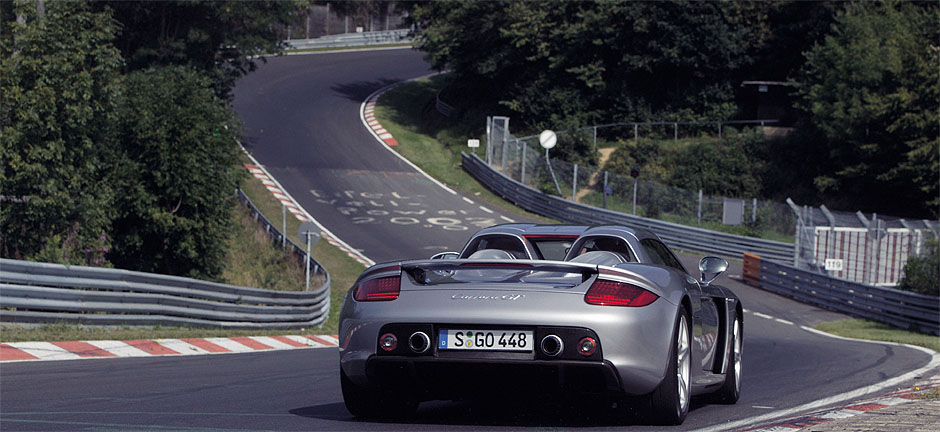
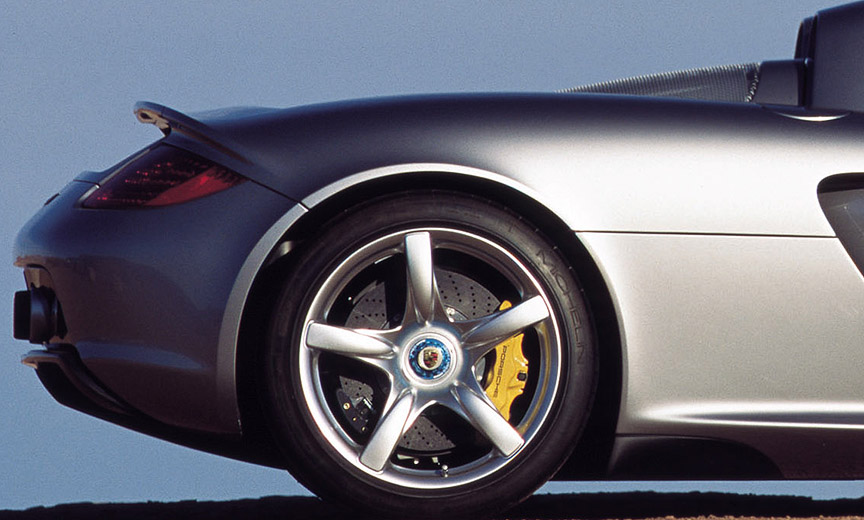
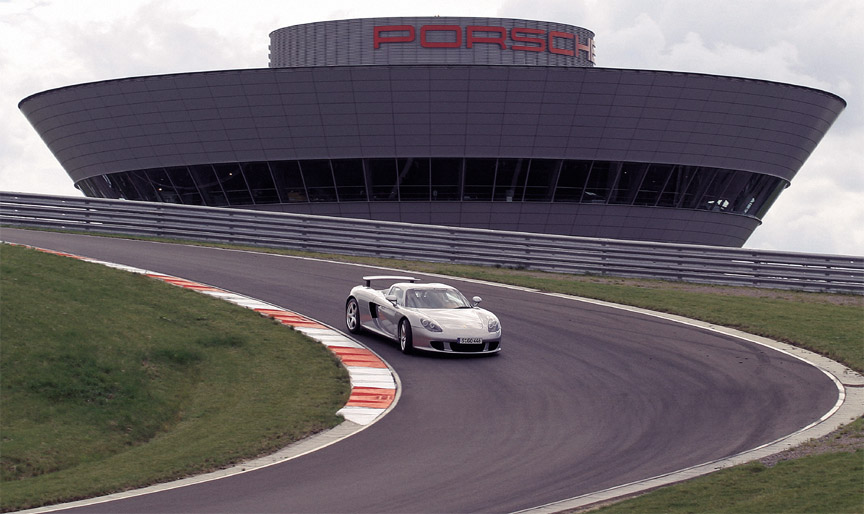
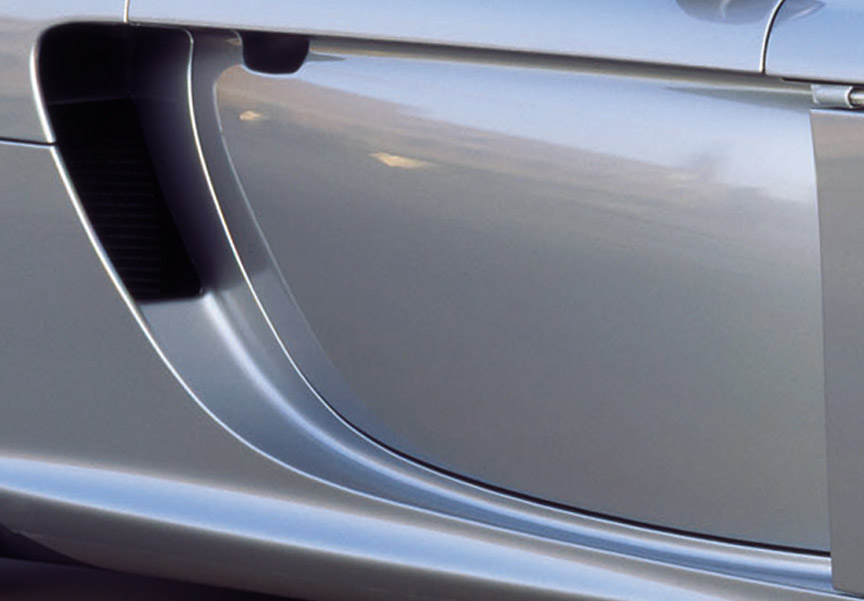
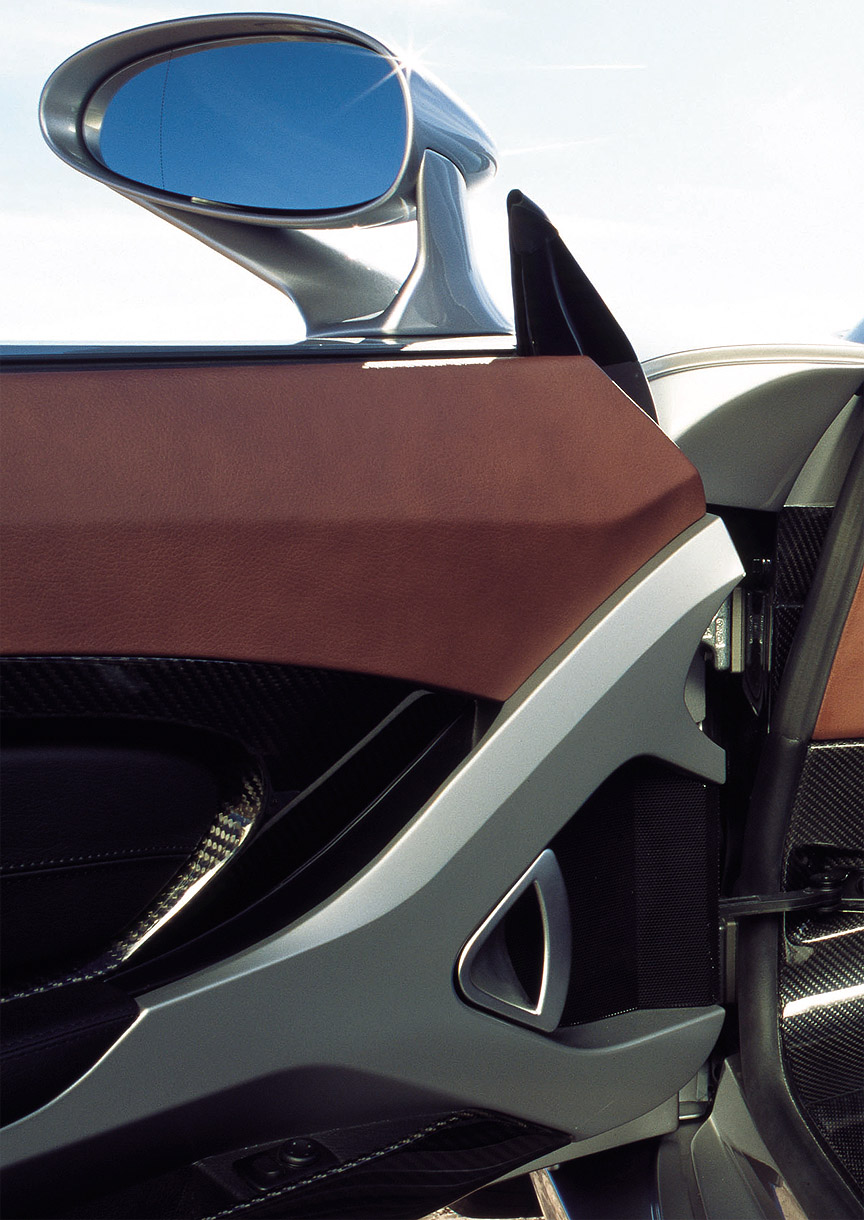
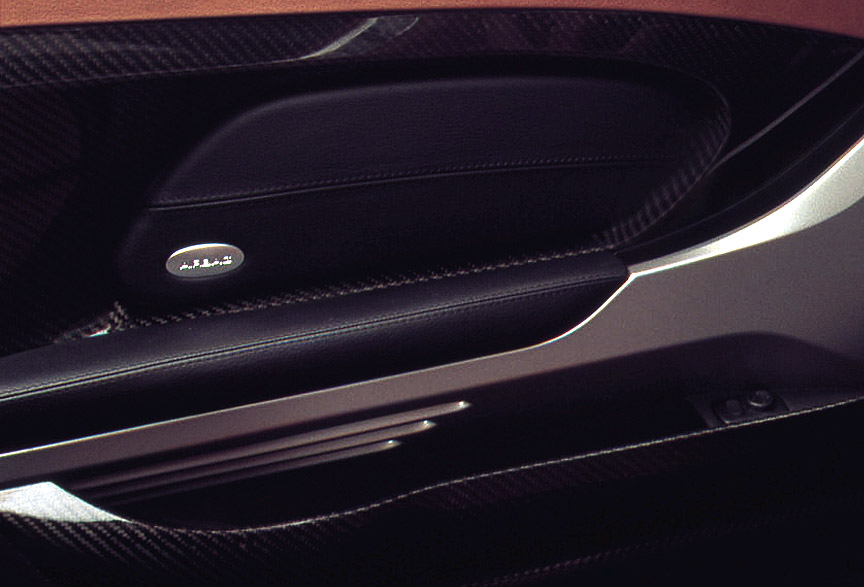
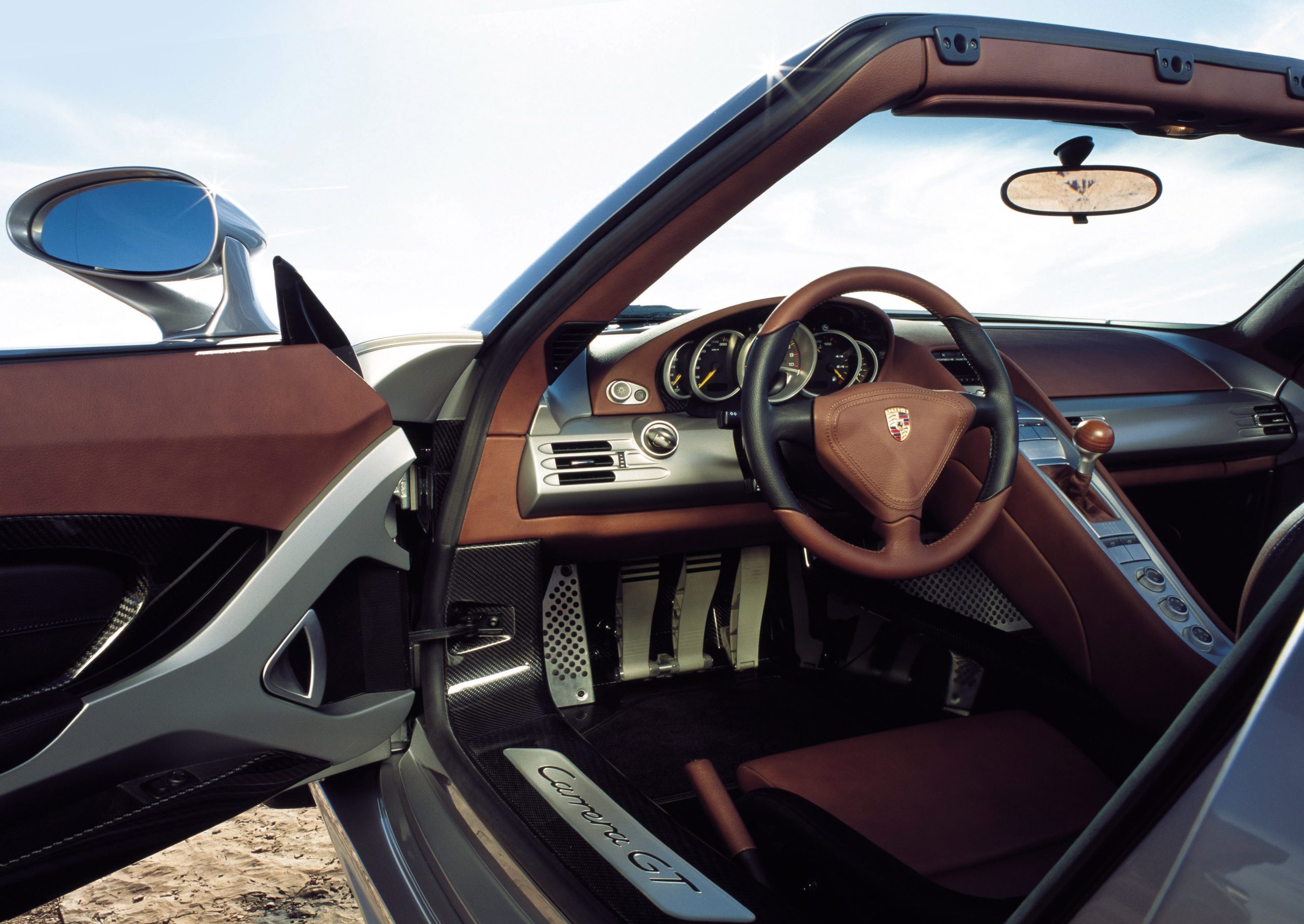
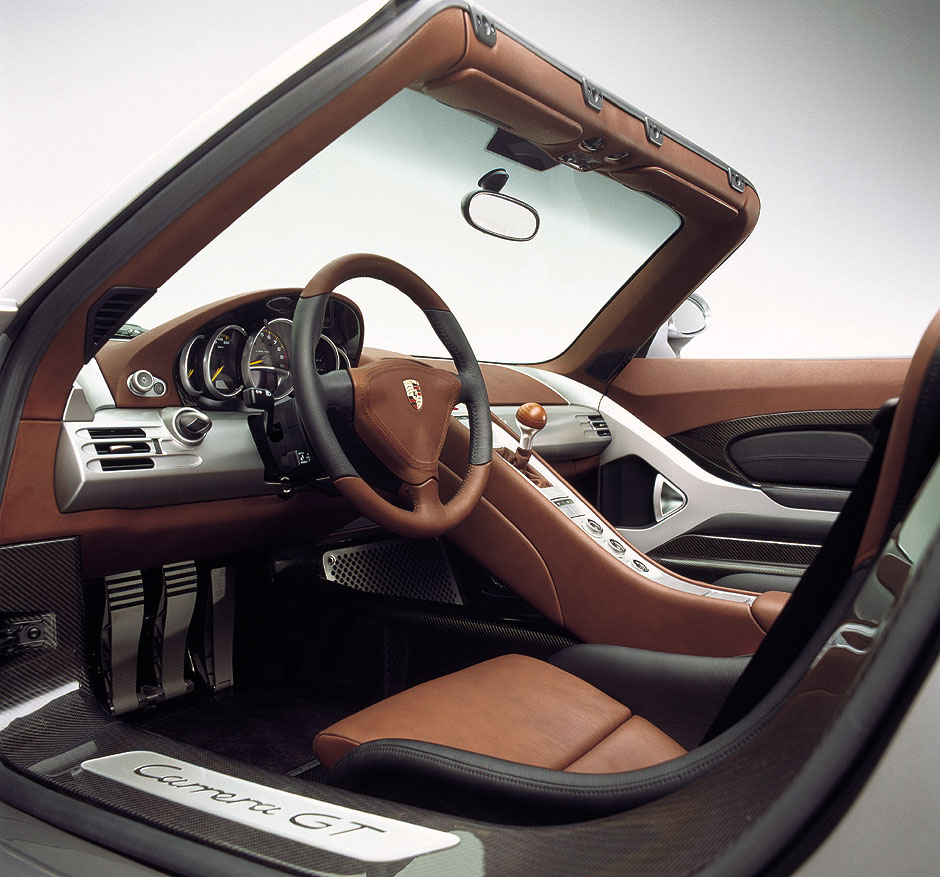
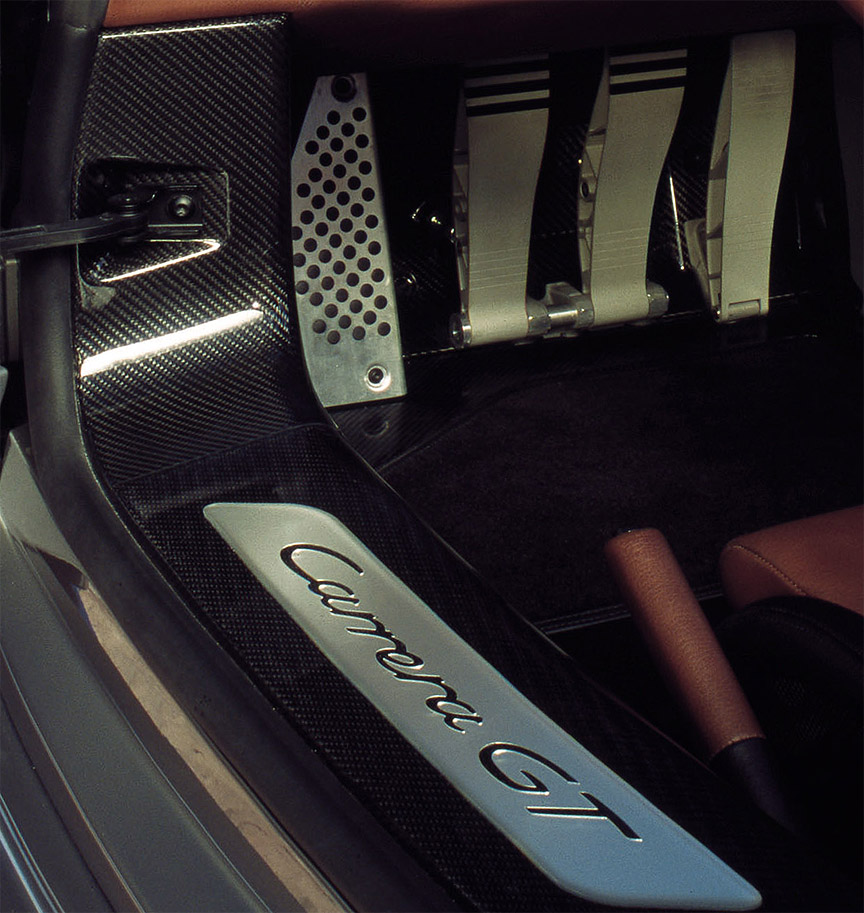
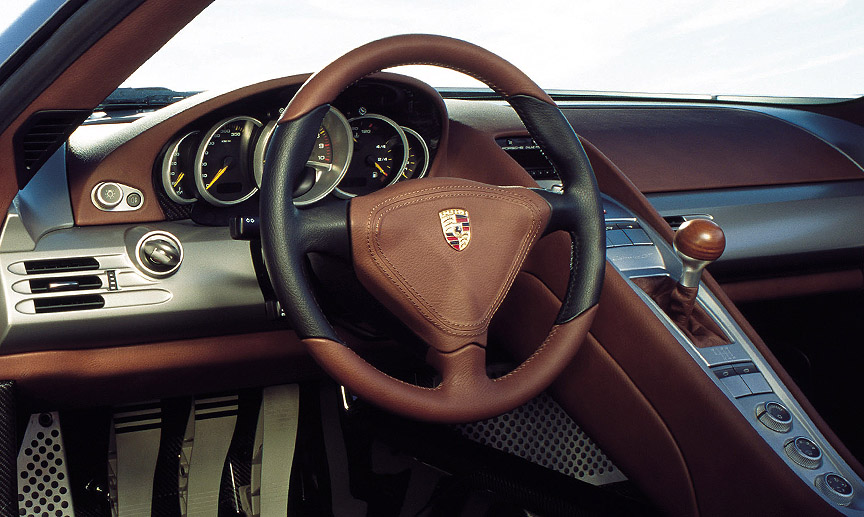
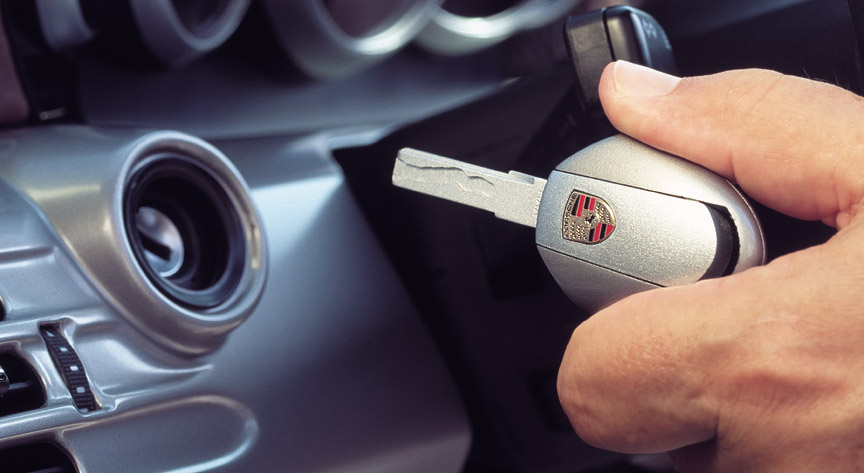
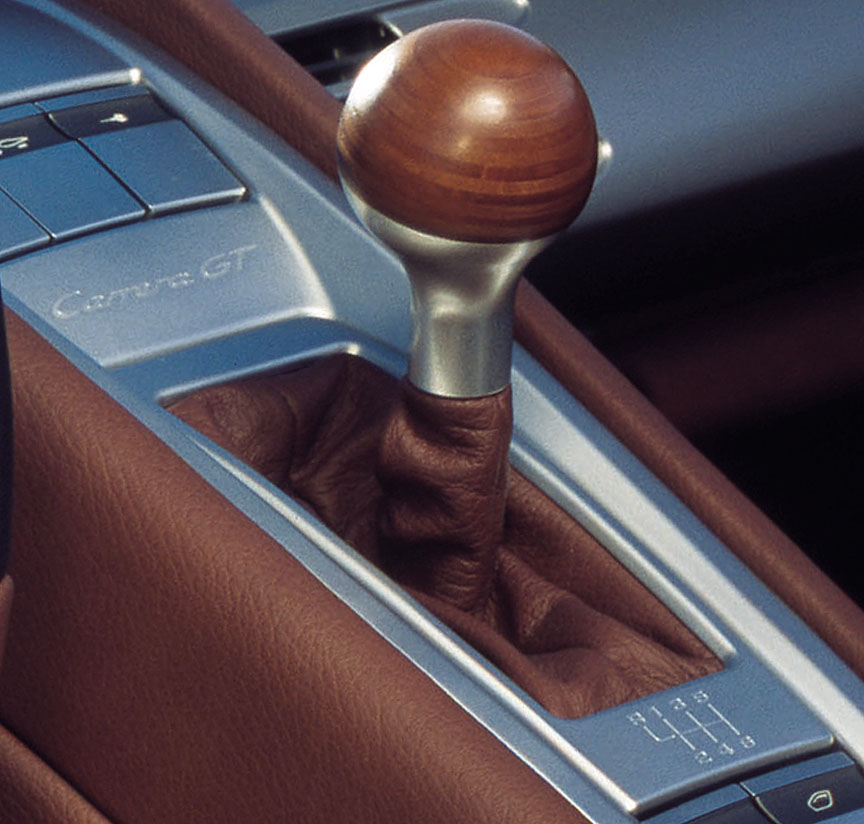
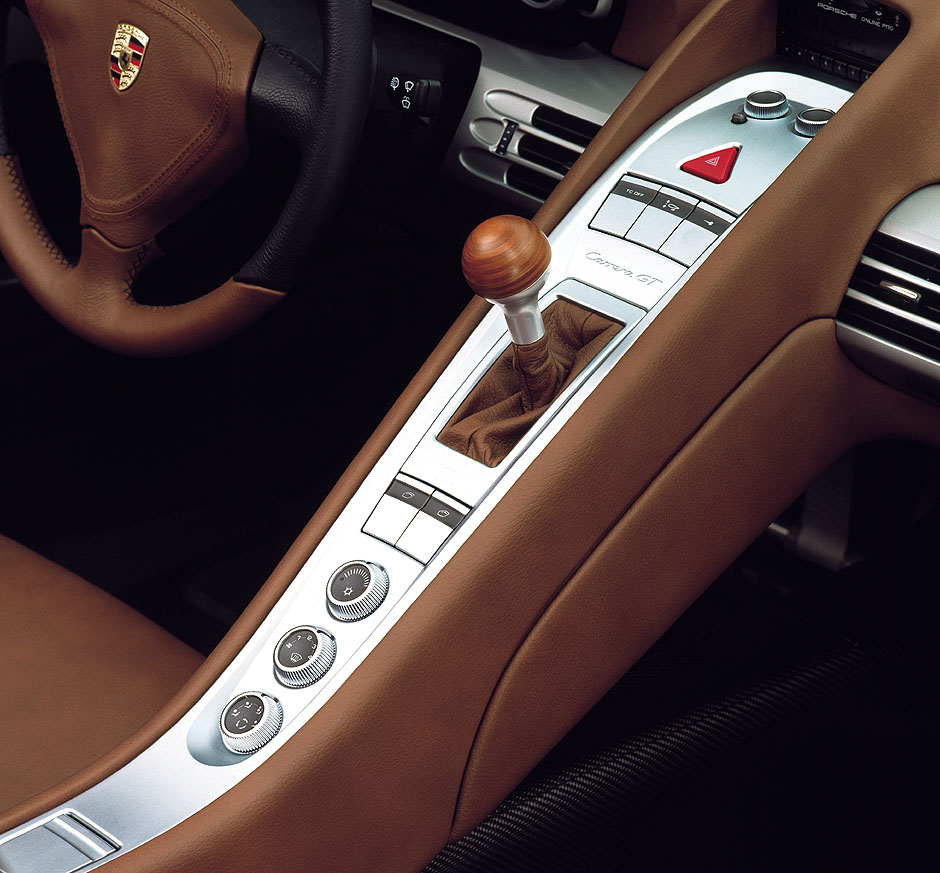
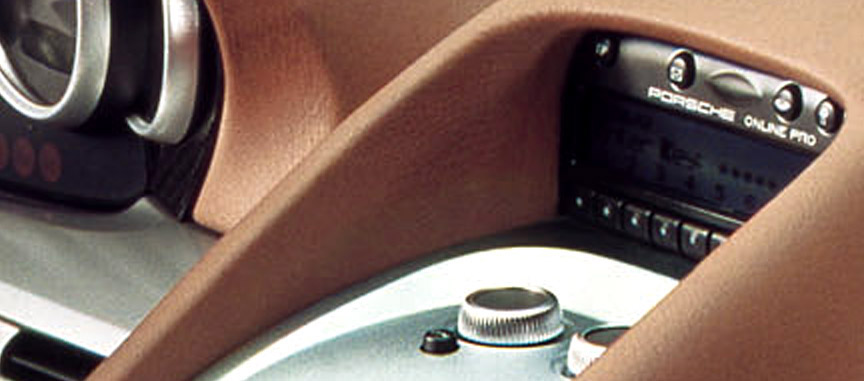
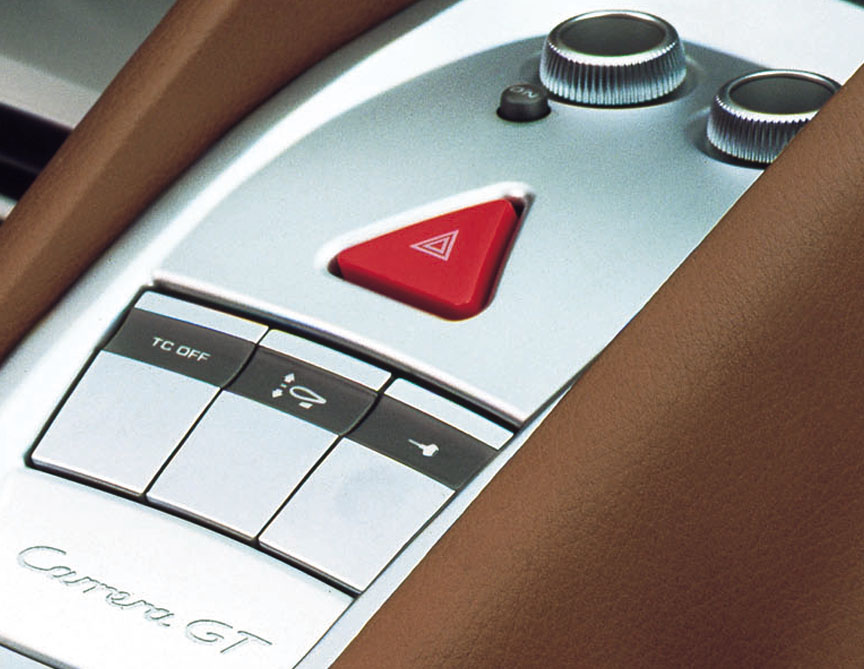
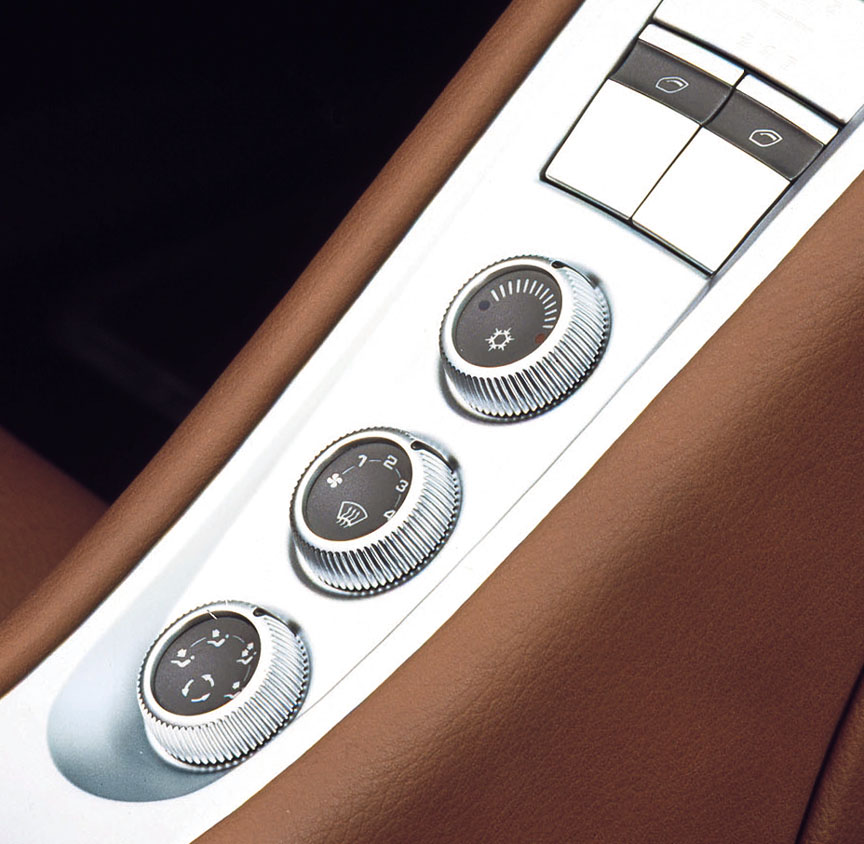
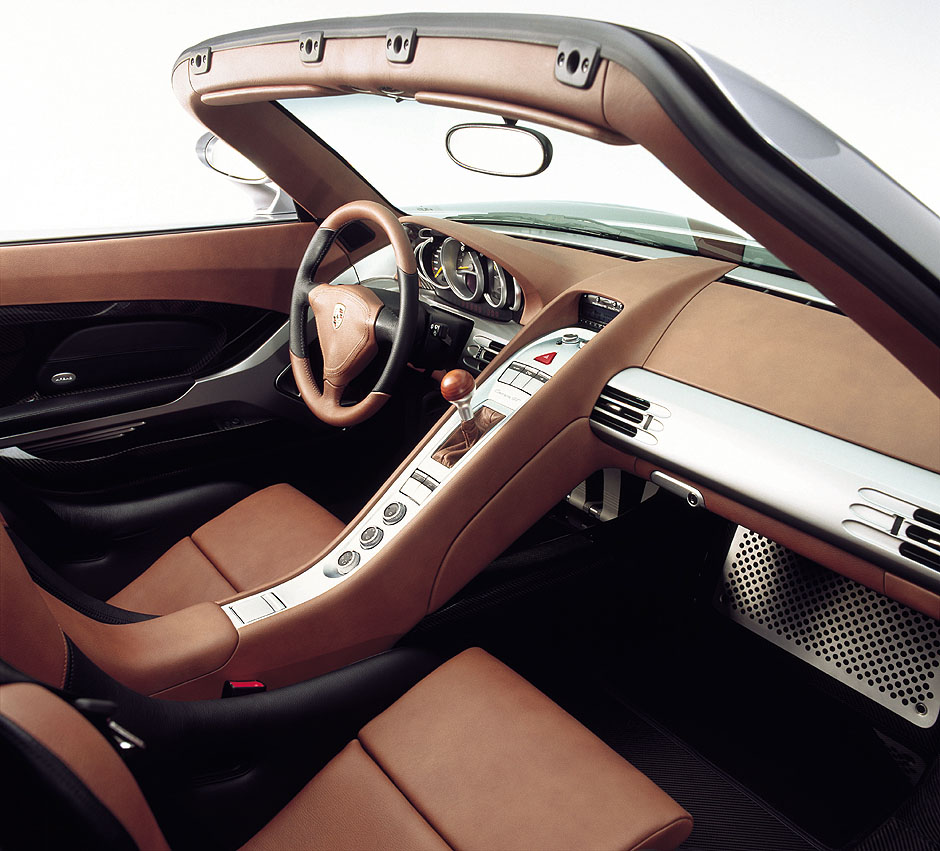
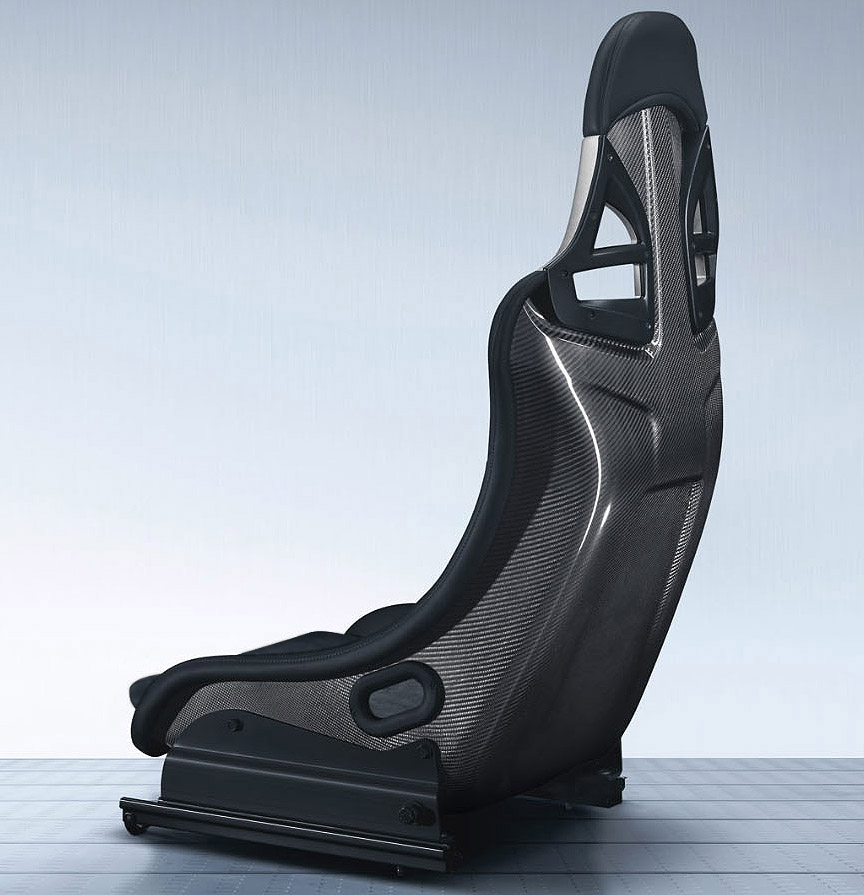
The Carrera GT Racing Car
One of the cars, chassis number WP0ZZZ98Z4L000145, was after the delivery rebuilt as a racing car by GPR (Garage Pino Racing). Modifications included a Motec engine management system, Stack instruments, Moton suspension, custom made wishbones and track rods, AP Racing braking system with steel discs, pedal box, air jacks, special heavy-duty clutch, Thiebaut roll cage, BBS custom made racing wheels, automatic fire extinguishing system and a competition fuel system. It is not known if this car ever raced.
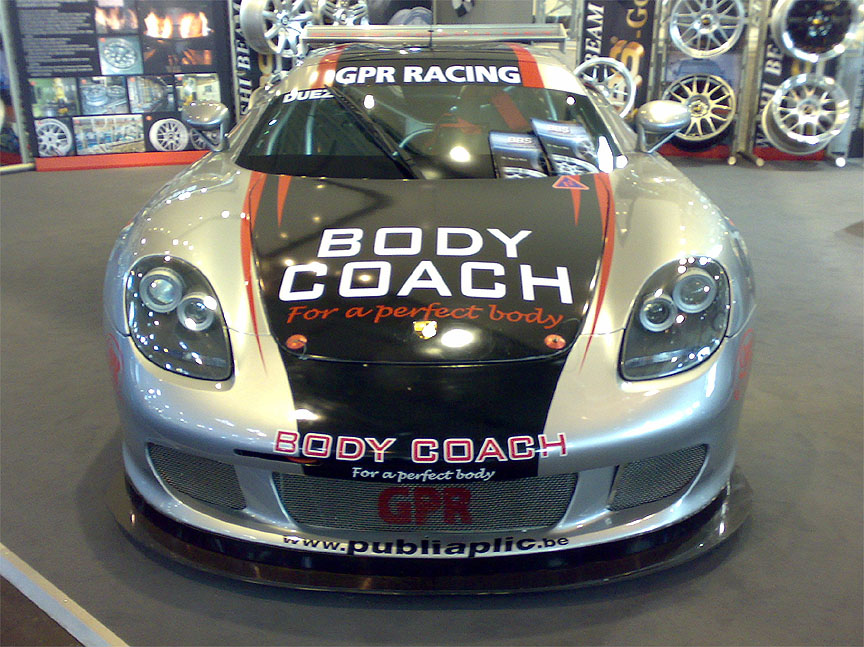
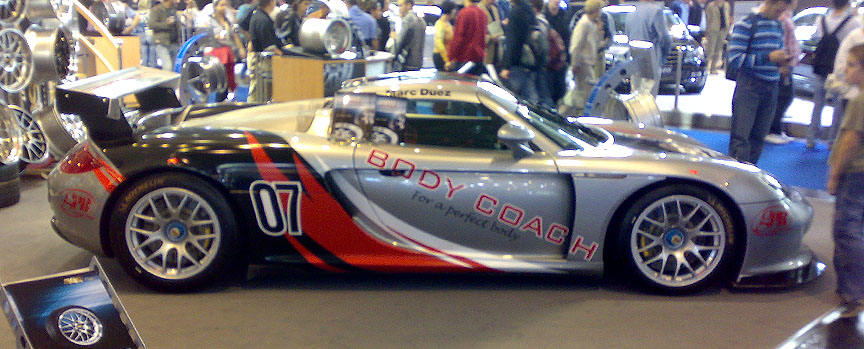


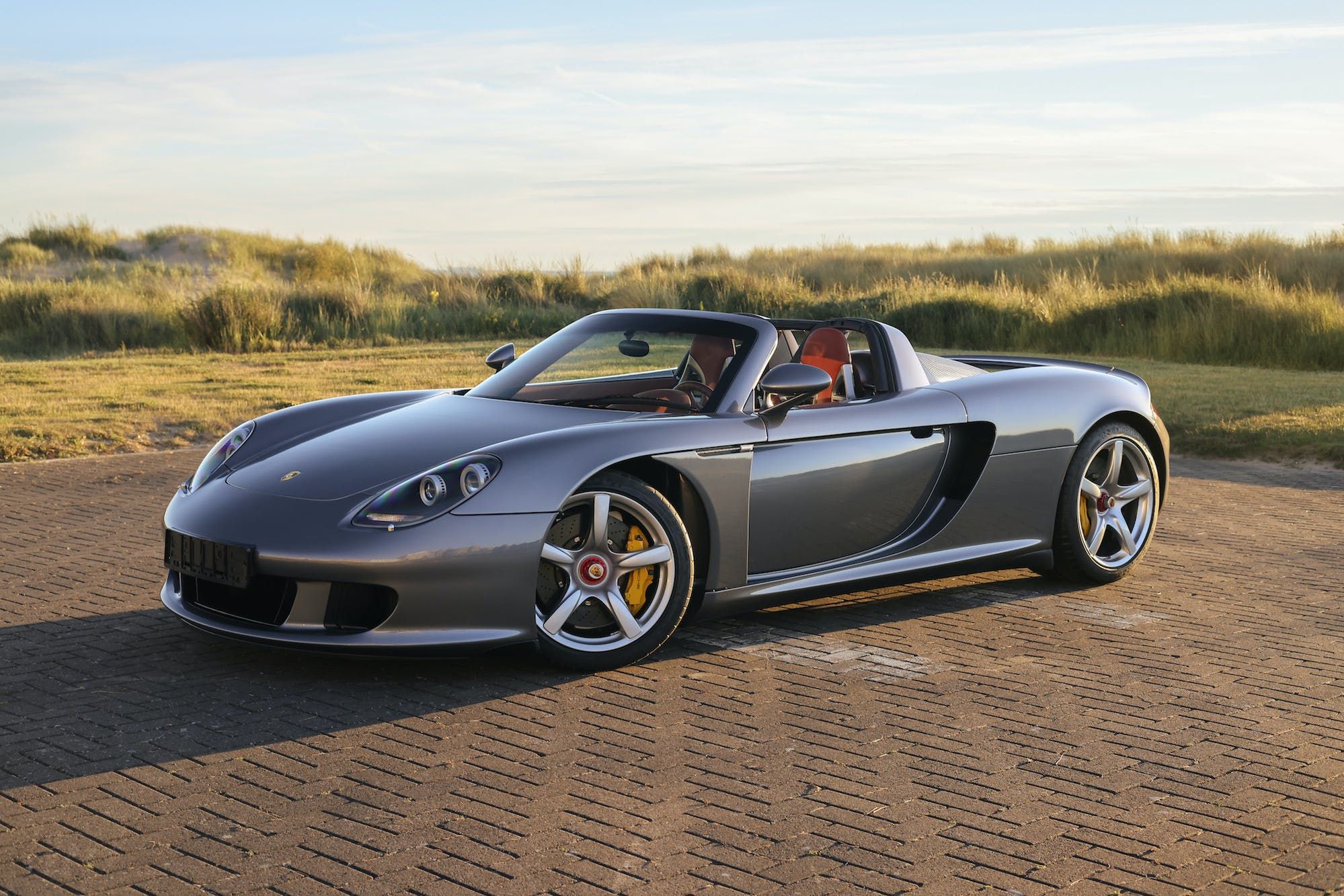
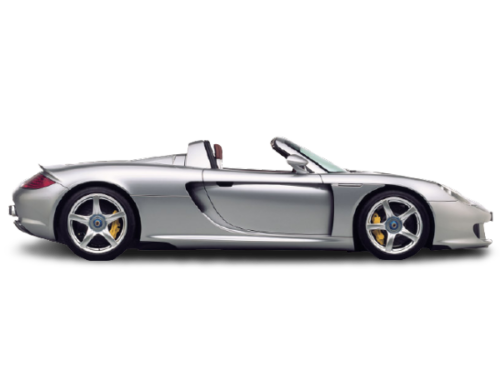
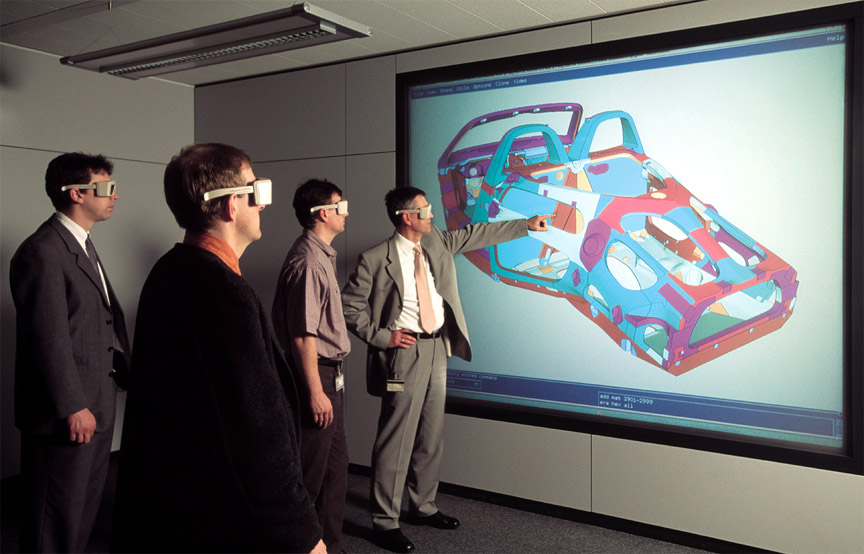
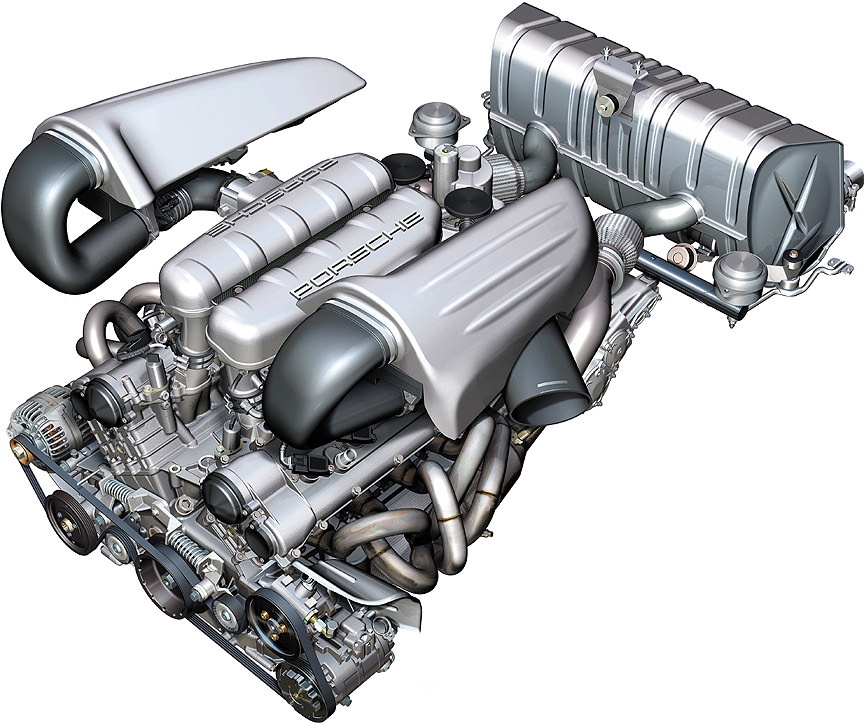
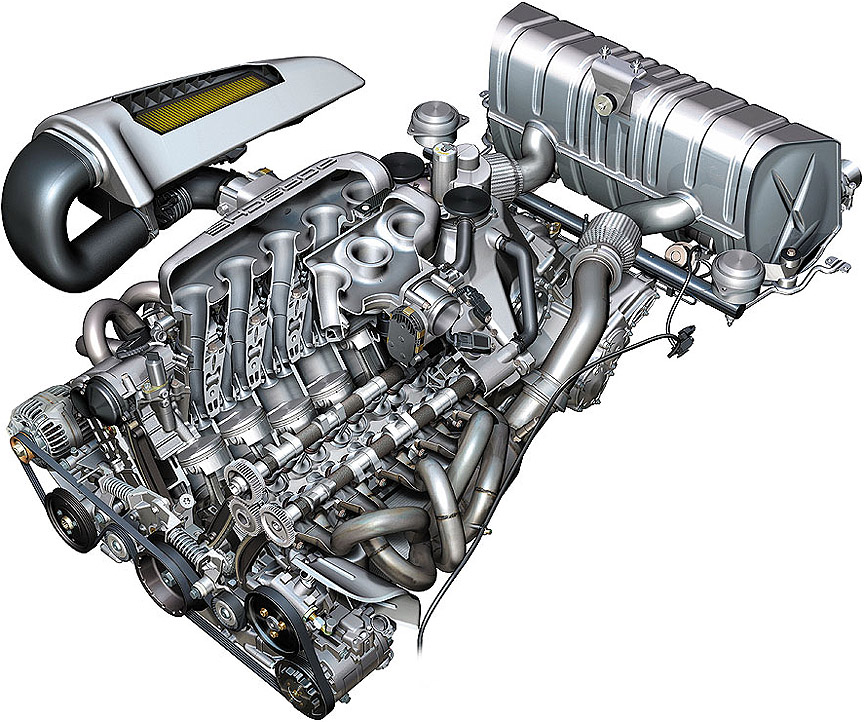 Ceramic clutch
Ceramic clutch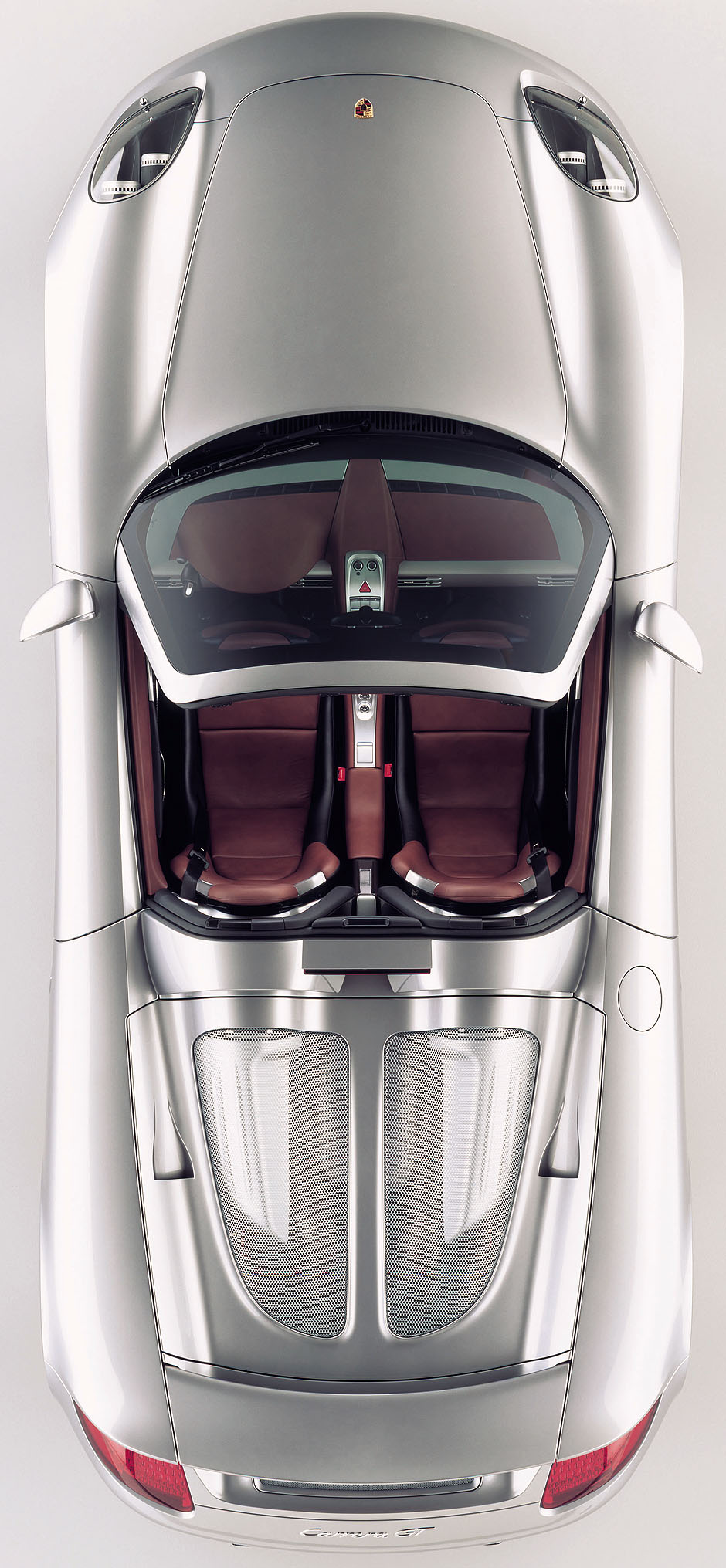
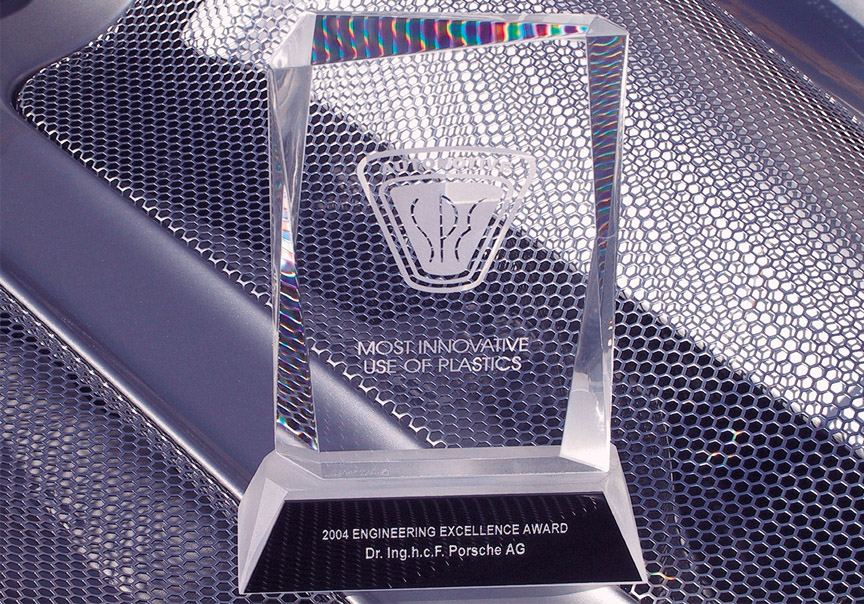






Porsche916 pictures,illustrations and diagrams : Hardshell retracting and one lift type for (BMW 440 ci)
0
Главные новости мира https://ua-vestnik.com и страны: политика, экономика, спорт, культура, технологии. Оперативная информация, аналитика и эксклюзивные материалы для тех, кто следит за событиями в реальном времени.
0